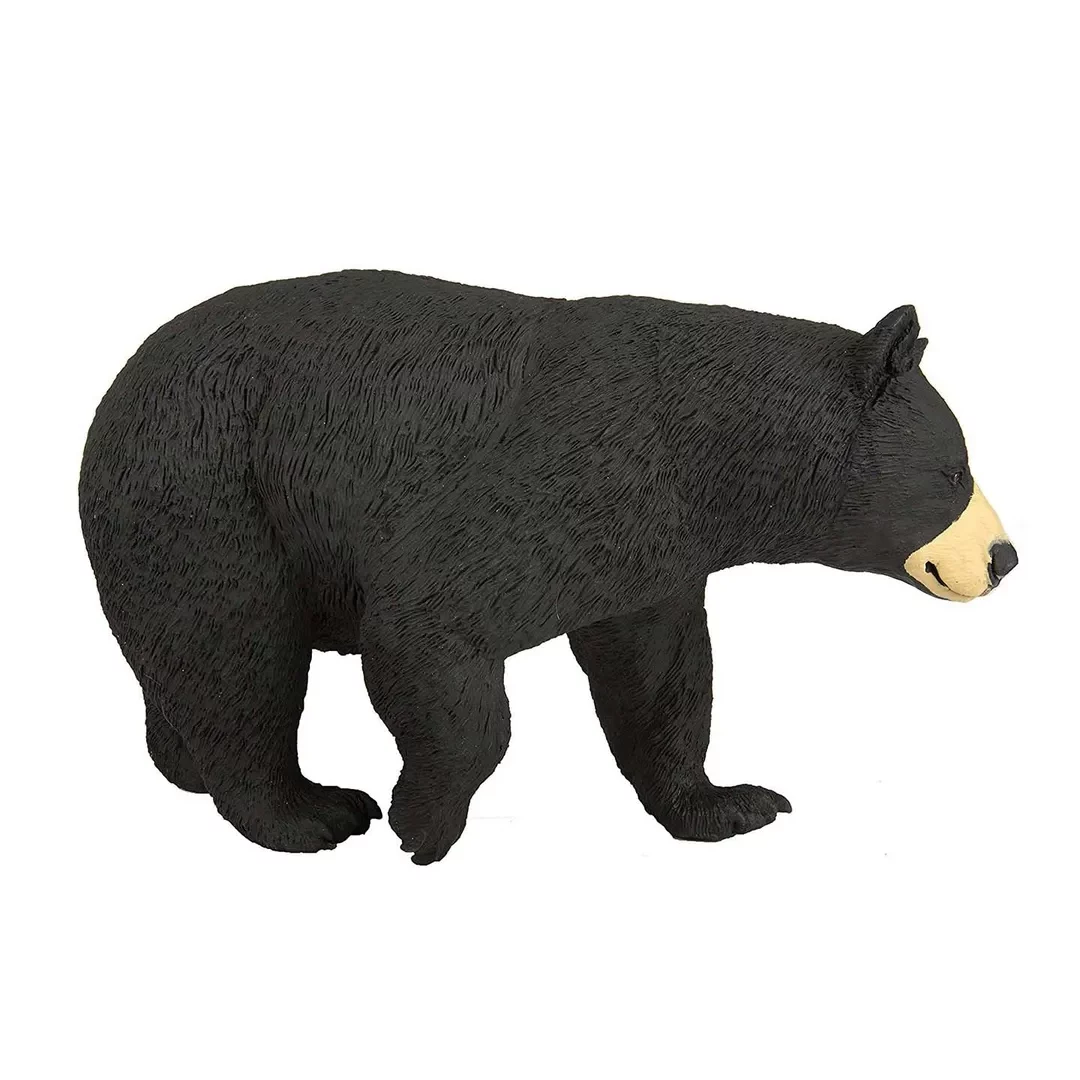
Animal Kingdom
Within the world’s forests, the bear rightfully claims the title of king of animals due to its impressive size and limitless strength, which make it a formidable opponent for any creature. This magnificent animal has inhabited numerous continents for countless years and is further classified into various species, each possessing unique characteristics. Humans are constantly exploring the behaviors and tendencies of bears, leading to astonishing discoveries. Furthermore, humans have even managed to domesticate some of these remarkable creatures.
Description, structure, appearance
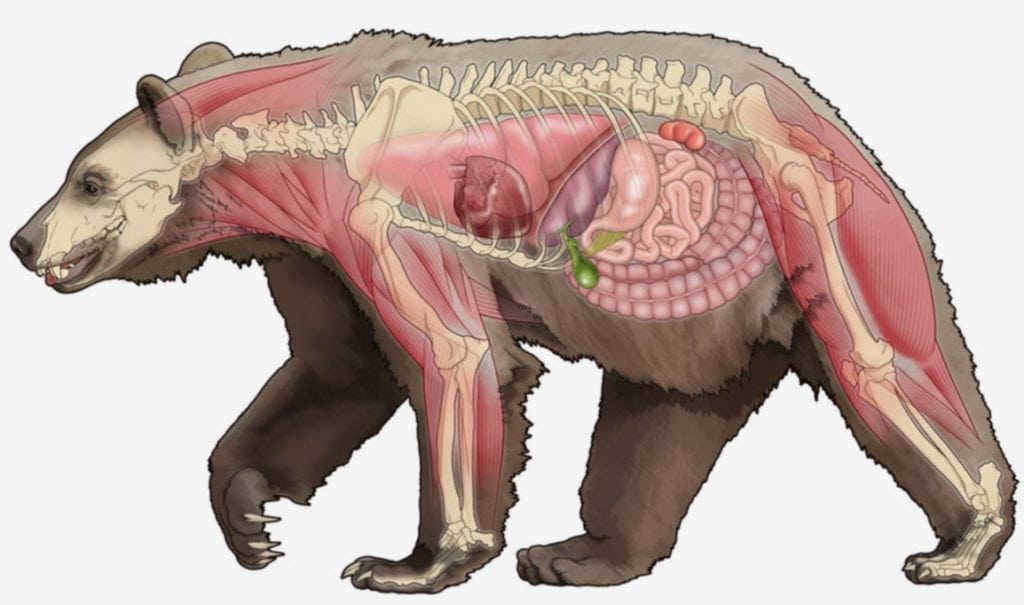
The bear, surpassing even the lion and tiger in size, holds the title of the largest predator on Earth. This formidable creature has roamed the planet for nearly 5 million years, solidifying its reputation as one of the most dangerous. Ranging in size from 1.2 to 3 meters and weighing anywhere from 40 kg to a ton, bears boast a massive physique, a thick neck, and a large, round head.
Possessing powerful jaws capable of chewing any type of food, bears also sport large fangs on either side of their small front teeth. These mighty animals traverse their surroundings on sturdy, bent legs.
The bear not only possesses excellent orientation skills in the forest, but it is also a proficient swimmer. Every bear species is capable of covering long distances in water. Additionally, the polar bear has webbed paws, which allow it to swim even faster. Furthermore, the bear is highly skilled at climbing trees, effortlessly scaling them in a matter of seconds. These abilities make the bear an exceptional predator, capable of tracking down its prey in any environment.
While bears have poor hearing and vision, their sense of smell is highly developed. The bear can detect even faint scents and determine their direction. This keen sense of smell enables the bear to navigate its surroundings with great precision.
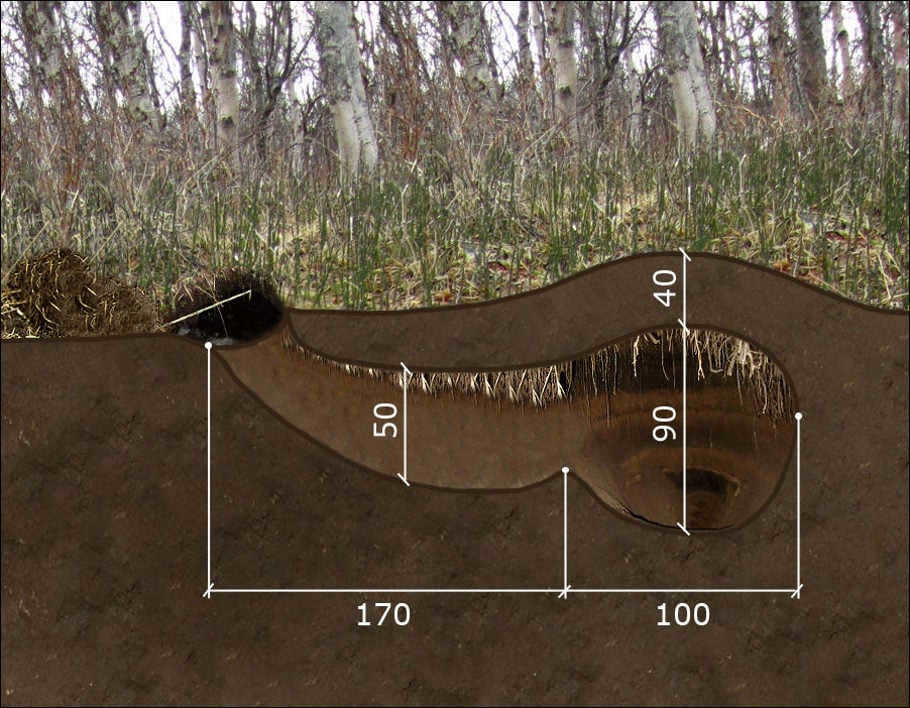
The hue of a bear’s fur is influenced by its species, resulting in variations of black, brown, and white. The pigmentation of the skin is also affected by this factor. Among white bears, the skin beneath the fur is black, enabling them to absorb more warmth from the sun’s rays in colder climates. In the case of brown bears, the skin appears gray. Occasionally, bears may suffer from a rare condition that causes nearly complete hair loss. One notable example is Dolores, a female bear residing in the Leipzig Zoo.
Living
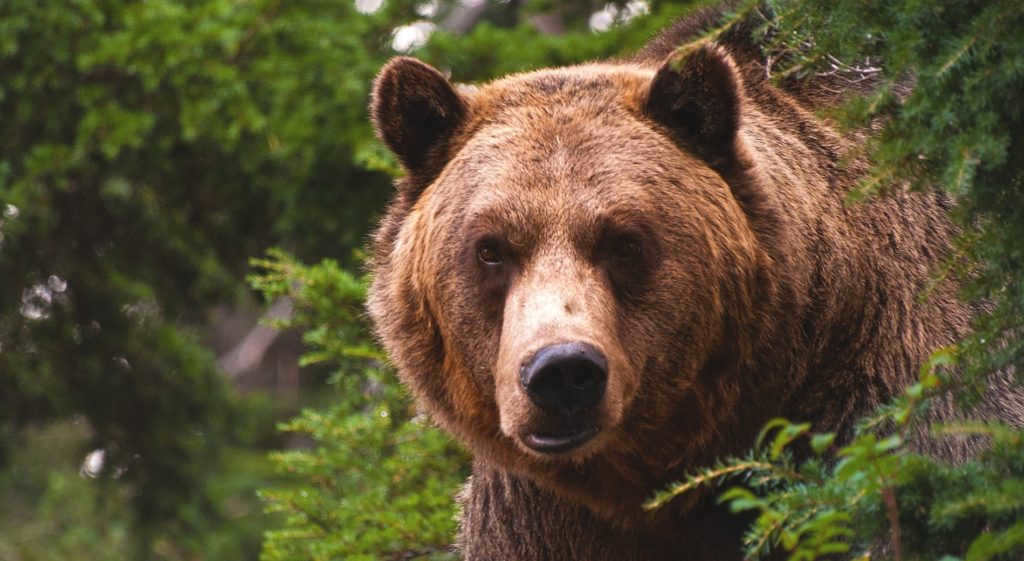
All types of bears have a sedentary lifestyle, except for polar bears, which have the ability to roam and claim new territories from time to time. Female bears live with their cubs until they become familiar with their surroundings, while adult males prefer to live alone and establish their own territories. In cases where multiple bears inhabit the same forest, each bear respects the boundaries and only hunts within its own designated area.
Fascinating fact: Bears mark their territories by leaving claw marks on trees and by using their scent to establish their presence.
What does a bear eat? Unraveling the mysteries of bear nutrition
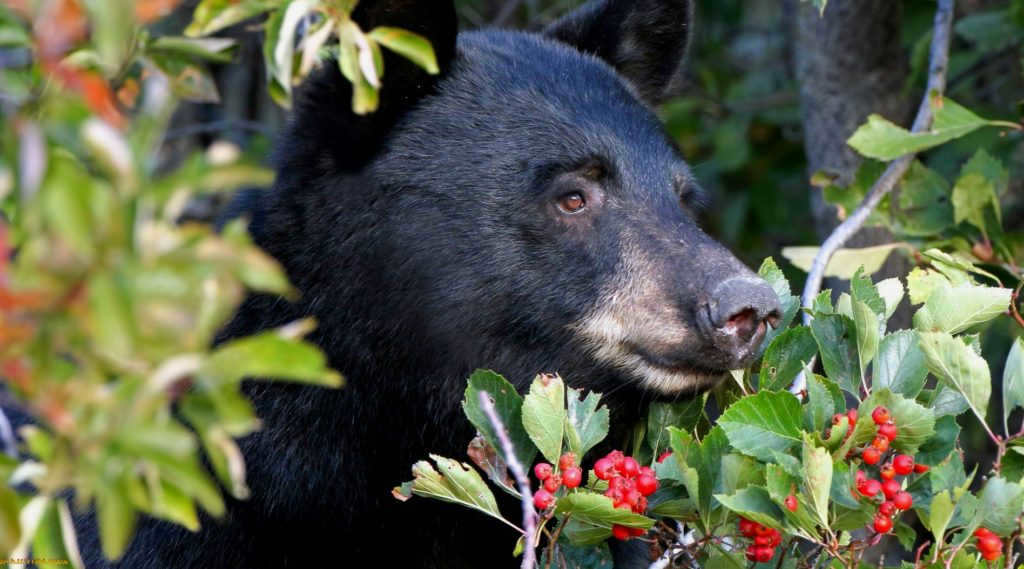

The bear is highly adaptable to its surroundings and has the ability to consume a wide variety of food. It is capable of eating berries and fruits from trees, as well as various animals such as rabbits, elk, deer, and other herbivores. Bears living near bodies of water are also able to enter the water and catch fish. The bear possesses excellent reflexes, enabling it to catch even fast-moving creatures underwater.
One particular preference of the bear is for sweet foods. As a result, it frequently visits beehives in order to consume honey. Its thick fur and dense skin provide it with virtually complete immunity to insect bites.
The diet of a specific species is determined by its habitat. In cold regions where berries and trees are scarce, polar bears rely solely on live prey for sustenance. On the other hand, Himalayan bears have access to an abundance of insects and frogs in their habitat, which makes them easy targets for their meals.
Areal – the bear’s habitat
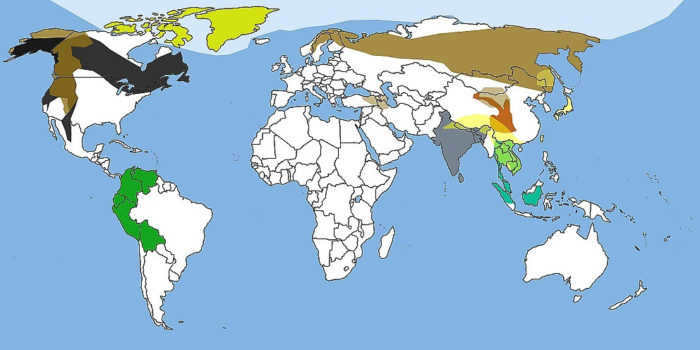
Most bear species inhabit forests, although they can also be found in plains, mountains, and coastal areas. Bears are commonly found in Eurasia, the Americas, the Arctic, and Africa, and some species can also be found in Japan and Australia.
Bears are highly adaptable to their surroundings and can thrive in both hot and cold climates. They make use of dens, ravines, and rock caves for shelter and rest.
Did you know?: As a result of evolution, polar bears have developed a colorless coat that efficiently absorbs the sun’s rays. The black skin underneath absorbs heat and transfers it to the bear’s body.
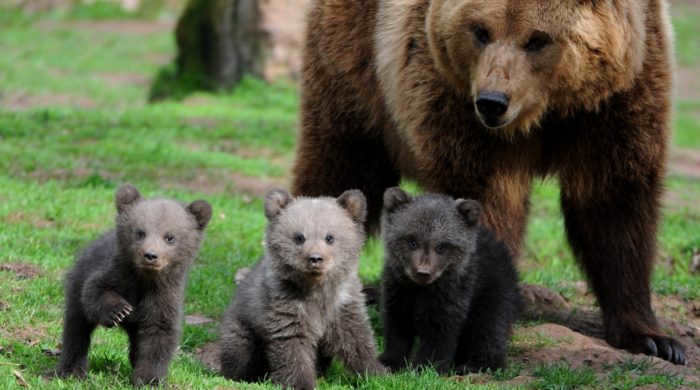
Males and females have separate living arrangements. However, during the mating season, the male ventures into the territory of the female in order to procreate. The majority of species engage in breeding activities between the months of May and June. It is not uncommon for multiple male bears to vie for the attention of a single female bear, and once the mating process is complete, the weaker male typically departs.
The birth of cubs occurs every two to four years, and the litter size can range from one to four offspring. The male bear may continue to visit the same female for multiple breeding seasons.
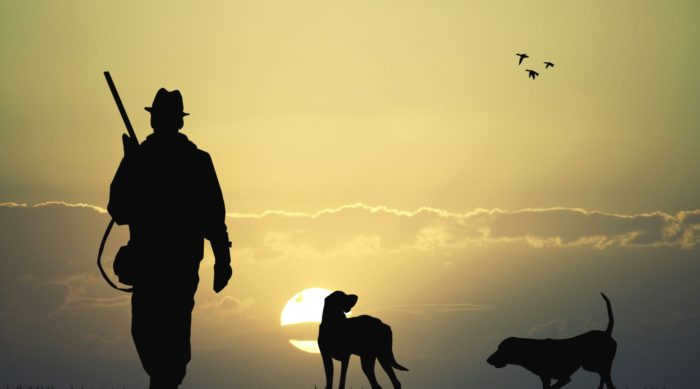
The bear, as the undisputed ruler of the forest, has no adversaries among the animal kingdom. Any creature that catches sight of its formidable figure will swiftly retreat, avoiding any potential conflict.
Fascinating fact: There have been documented instances where packs of wolves have fled at the mere glimpse of a bear. Despite their numerical advantage, other predators choose to steer clear of engaging with this formidable creature.
However, the bear itself poses a constant threat to almost every animal it encounters. Depending on its mood and level of hunger, it is capable of attacking any unsuspecting creature.
Maybe the only creature brave enough to confront a bear is a human being. Considering that these animals can grow to an impressive size, a single person can obtain dozens of kilograms of meat and a big, cozy hide.
The lifespan of bears – in their natural habitat and in captivity
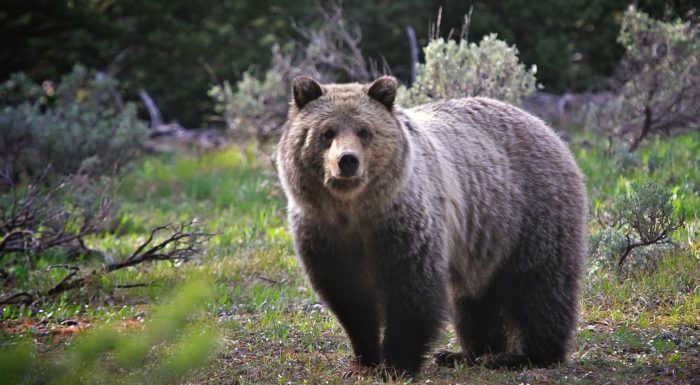

Bears have a relatively slow growth and development rate compared to other animals. It takes them around 4-6 years to reach sexual maturity, and their body finishes fully developing by the age of 10-11. During this period, they undergo significant weight gain and physical growth.
In their natural habitat, many bear species have an average lifespan of 27-30 years. However, their longevity can be significantly impacted by various factors and unfavorable conditions they may encounter during their lifetime.
Under controlled circumstances, with adequate attention, the creature can survive for an extended period: up to 45 years. When residing in a zoo or sanctuary, where it is nurtured and protected, the bear doesn’t have to engage in hunting, endure strenuous journeys, or partake in any activities that may harm its physique. Consequently, these animals have the chance to thrive and mature without compromising their well-being.
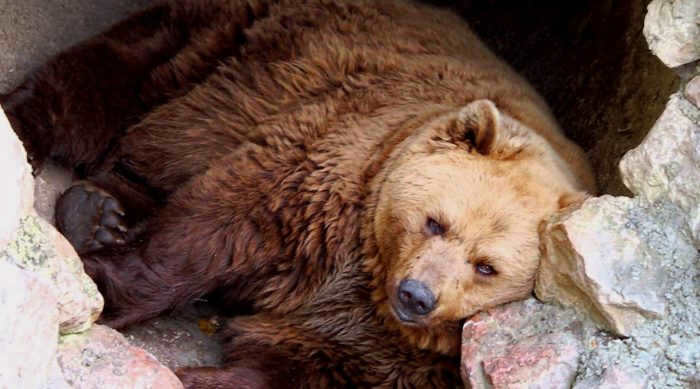
In autumn, bears start to consume everything they come across, sensing the impending cold weather. This is essential for them to accumulate a significant amount of weight in order to survive hibernation. Some bears can consume up to 200 kg of food prior to entering a state of suspended animation.
The active weight gain is not a random occurrence, and each bear strives to consume more than necessary. This is because if the body doesn’t have enough reserves for the entire winter period, the bear will wake up prematurely. It will have no choice but to leave its den and search for food. However, when everything is covered in snow, the animal faces significant challenges in quickly adapting and providing for its needs. Additionally, some bears that haven’t gathered enough supplies may not hibernate at all. Consequently, they have to survive from the first day of winter, often without success.
Fascinating fact: Bears that do not undergo hibernation or emerge from hibernation prematurely are referred to as hibernators. They exhibit heightened aggression, voracious hunger, and impulsively lunge at any form of movement.
A bear’s hibernation period typically spans approximately 200 days. Throughout this duration, the animal enters a state of anabiosis, where it remains motionless, refrains from consuming food, and simply slumbers. Concurrently, its bodily functions decelerate by 55%. The heart rate diminishes to a mere 8 beats per minute, instead of the customary 50-55. In this state, the animal can persist until its internal bodily reserves are depleted.
The bear hibernates in its own den, which it prepares in advance. Due to its thick fur, the bear does not need to insulate its dwelling during the cold weather. It simply removes any unnecessary items from the den and slightly camouflages the entrance to protect itself from unwelcome visitors. After all, who would dare disturb a potentially dangerous bear?
Does a bear possess a tail?
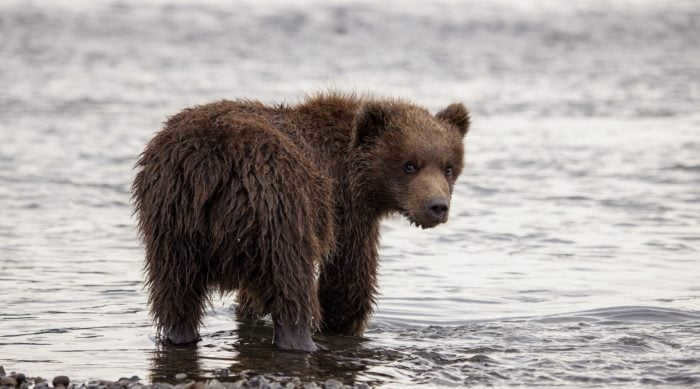
Researchers have made a fascinating discovery indicating that bears possessed tails millions of years ago. Surprisingly, these tails served no purpose for the animal. While many animals rely on their tails for balance while running, spatial orientation, and communication, bears instead prioritized the development of their sense of smell and physical strength. Consequently, the bear’s tail gradually diminished over time until it eventually vanished completely.
Presently, nearly all bear species possess a small, non-functional flap of skin at the rear, measuring no longer than four inches. These tails are immobile and simply dangle from the bear’s posterior.
Types of Bears, Pictures, and Names
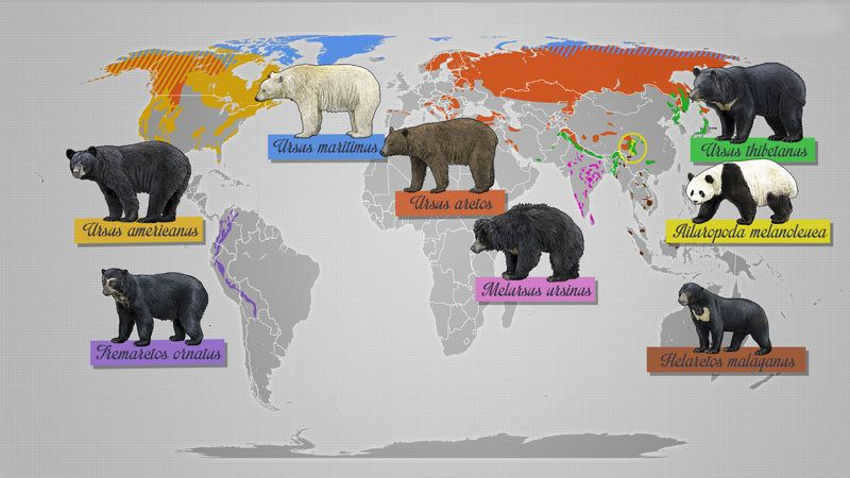
There are eight primary species of bears that inhabit specific regions, each with its distinct physical characteristics and behavioral traits. Due to their exceptional adaptability to the environment, each bear family has developed unique habits based on the surrounding conditions.
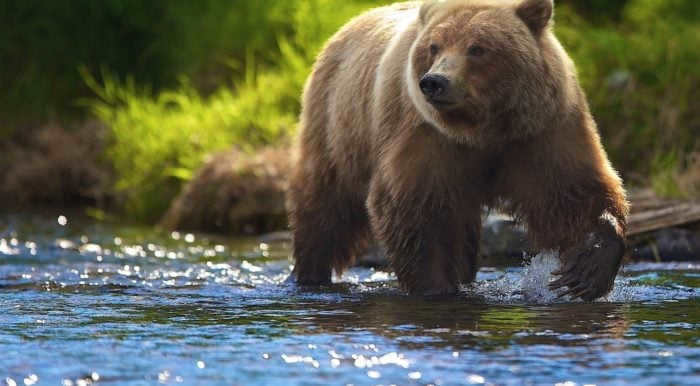
The predominant type of animal, recognized by its particular shade of fur. Individuals of this species possess a typical physical appearance: a coat of brown fur, a substantial stature, a round-shaped head, and limbs that are bent in shape.
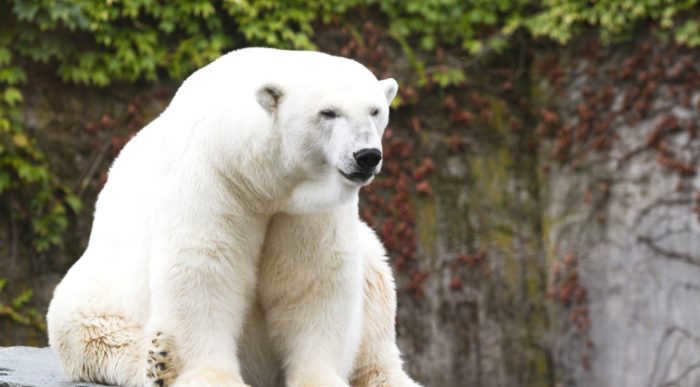
Polar bears, also known as polar, are the largest species in their family. Adult polar bears can grow up to three meters in size and weigh up to a ton. These magnificent creatures inhabit the polar regions of the northern hemisphere and have evolved to thrive in the extreme cold of their environment.
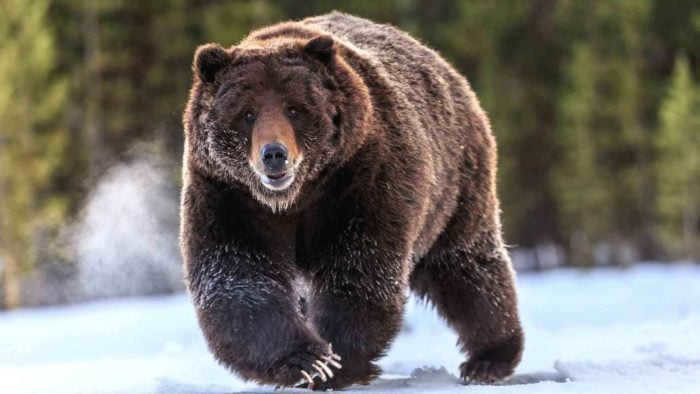
The grizzly bear is known for its impressive size, with individuals reaching up to 2.8 meters in length and weighing as much as 600 kg. One of its distinguishing features is the long claws on its paws, which are used to catch fish in local bodies of water. Fish makes up a significant portion of its diet.
Fascinating fact: due to the brown fur appearing faded in the sunlight, the grizzly bear is sometimes referred to as a “gray bear.”
This particular species is native to America, with a majority of the population concentrated in Alaska. They typically inhabit forested areas that are in close proximity to rivers. These rivers serve as a reliable source of fish for the grizzlies.
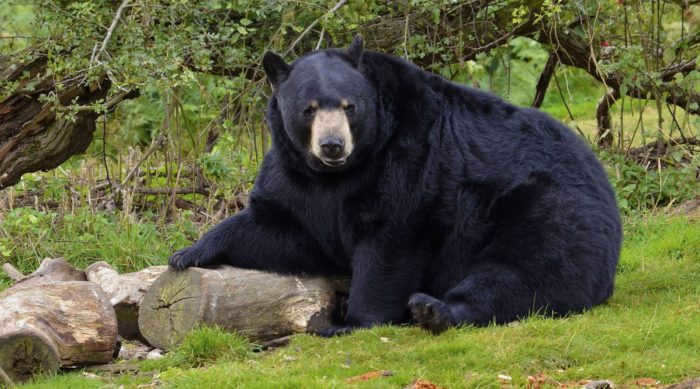
The baribal, which inhabits North America, is smaller and black compared to the aforementioned species. It can grow up to 2 meters in size and often has light brown fur around its nose. In terms of behavior and lifestyle, it is virtually identical to the brown bear.
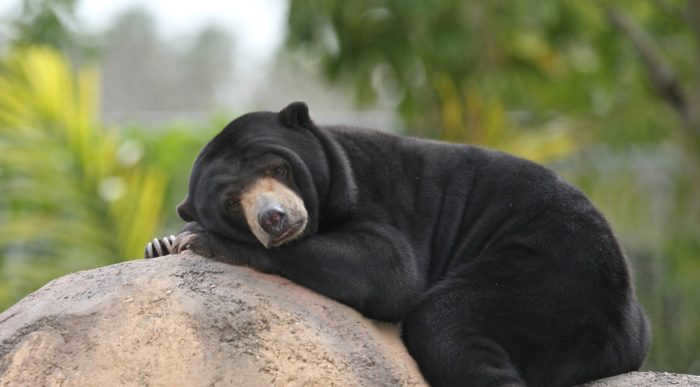
The Malayan bear, also known as the biruang, is possibly the tiniest bear species, measuring no more than one and a half meters. It can be found in Indonesia, China, and Thailand. This bear’s fur varies in color, with black, brown, and light-colored patches on different parts of its body. Besides its small stature, the Malayan bear stands out from other bears due to its large paws adorned with long claws. It is also believed to be one of the earliest species to have existed on Earth millions of years ago.
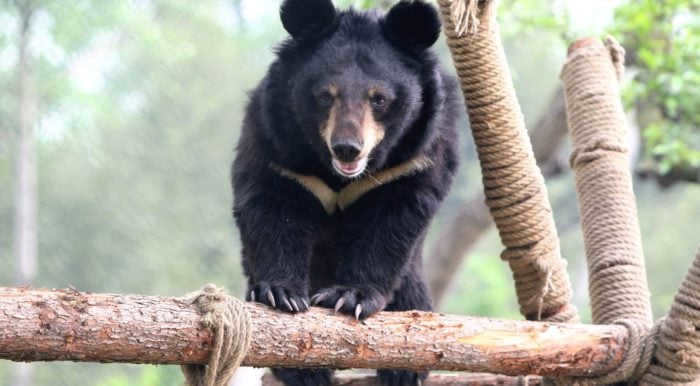
The white tick pattern on the chest sets this species apart from others, making it easily identifiable. As a result, it is commonly referred to as the white-breasted bear. Fully grown individuals can reach a height of 1.7 meters. The habitat of the Himalayan bear includes China, Vietnam, Tibet, Korea, and Afghanistan.
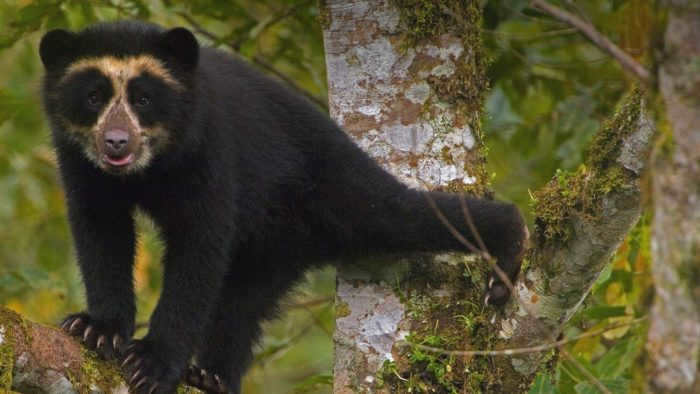
Found in South America, including Colombia, Peru, Panama, and Ecuador, the spectacled bear is characterized by its unique yellow rings around the eyes. These bears can reach a height of up to 1.8 meters when fully grown.
Gubach bear
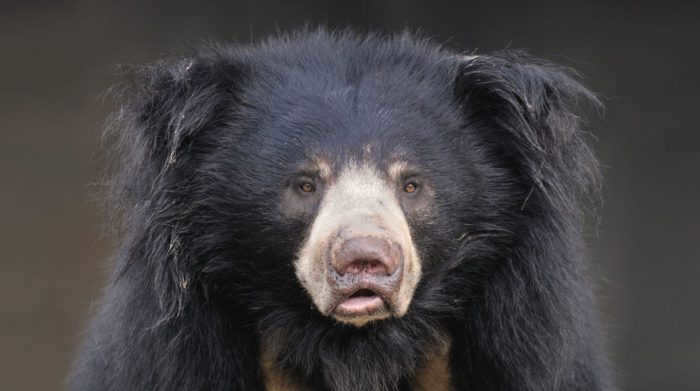
Distinguished from the others by its elongated head, reminiscent of a canine’s, and its long fur, the Gubach is easily identified. It boasts a black coat adorned with white patches on its chest. This magnificent species can be found in Nepal, Bhutan, Pakistan, and Bangladesh.
The Practice of Housing Bears in Zoos
Various species of bears are commonly housed in zoos worldwide. In order to ensure the well-being of these animals while in captivity, it is crucial to recreate their natural habitat as closely as possible. The enclosure should be furnished with rocks, soil, and logs, and it may also be beneficial to include a small pool. Furthermore, it is essential to provide the bear with a diet that closely resembles its natural food sources during each respective season of the year.
Conservation
The Red Book includes the brown bear as a protected species, making hunting it illegal. While this particular species is not currently facing extinction, its population growth remains sluggish.
In 1975, the Soviet Union, Canada, Norway, England, and Denmark initiated a dedicated initiative to safeguard brown bears. Presently, cubs are bred in specially designed reserves and reintroduced to their natural habitat once they reach adulthood.
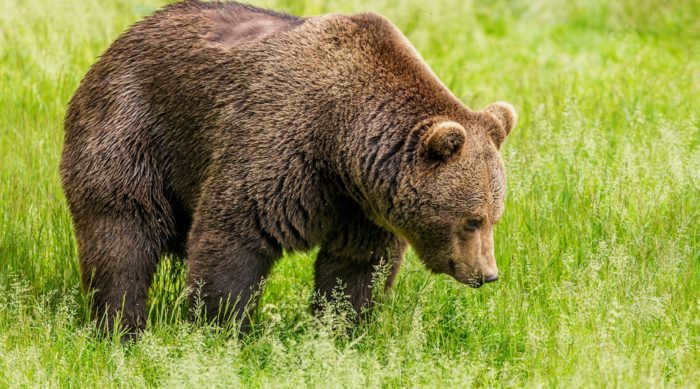
Currently, there are about 205 thousand brown bears inhabiting our planet, with 130 thousand of them residing in Russia. Unfortunately, certain species, such as the grizzly bear and the Atlas bear, have been completely eradicated.
Efforts to conserve bears and boost their population are being made worldwide, although poaching poses a significant challenge. To safeguard these magnificent creatures, dedicated reserves are established, providing a safe haven for their growth and reproduction.
Differences between the brown bear and the polar bear
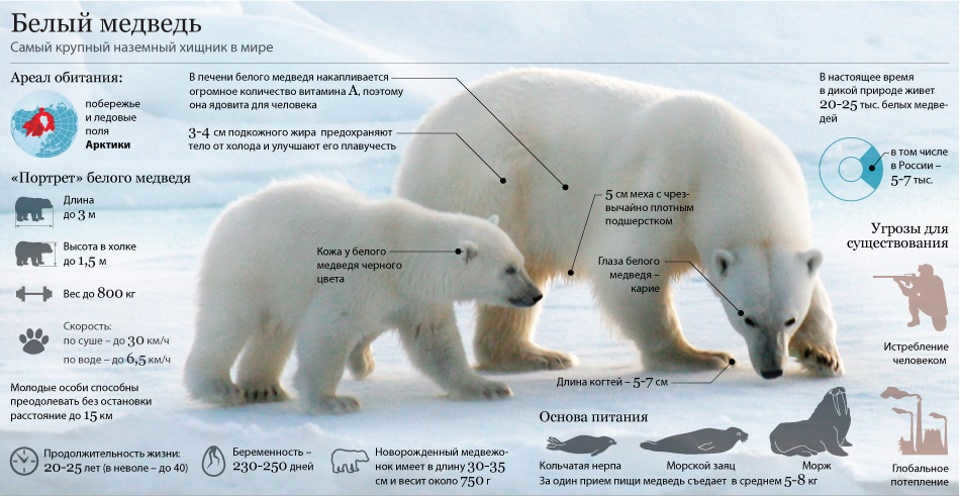
Both types of bears display distinctive characteristics. Polar bears inhabit the frigid regions of the polar areas, while brown bears prefer milder climates with abundant vegetation. Polar bears possess a long neck and a slender head, whereas forest-dwelling brown bears have a round head positioned close to their shoulders. Underneath their fur, polar bears have black skin, while brown bears have gray skin.
Polar bears are larger in size, measuring up to 3 meters in length and weighing up to a ton, whereas brown bears typically grow to about 2 meters and weigh no more than 800 kg. Additionally, brown bears hibernate during the winter months, whereas polar bears, due to their exceptional adaptation to the cold, may remain active or enter a state of temporary torpor.
The Genesis of the Species
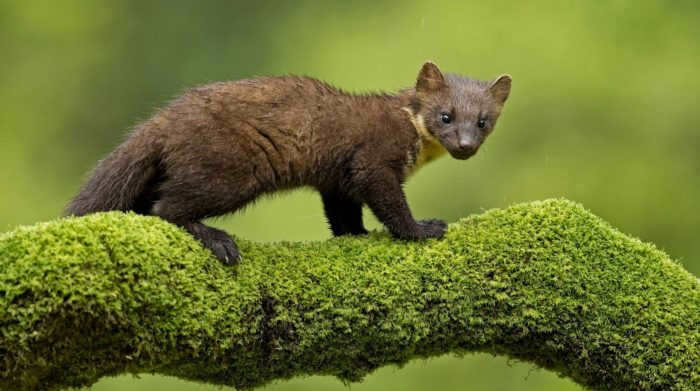
The bear’s origins can be traced back to martens, with bears appearing around 5 million years ago. It is believed that the first bears lived in what is now France, as evidenced by the remains that have been discovered. Through careful examination, scientists have determined that the ancient bear species shares a strikingly similar DNA with the Malayan bear species. Over time, bears expanded their territories, spreading throughout Europe and Asia.
Fascinating fact: The earliest bear species were not large in size. Given their lineage as descendants of martens, they still retained physical similarities to their ancestor.
As a result of the expansion of new territories and shifts in the ecosystem, bears started to undergo evolutionary changes and diverged into various species. Approximately 2 million years in the past, black and brown bears emerged, exhibiting a significant increase in size compared to their counterparts.
An Engaging Video on Bears
If you happen to come across any inaccuracies, kindly select the problematic text and press Ctrl+Enter.
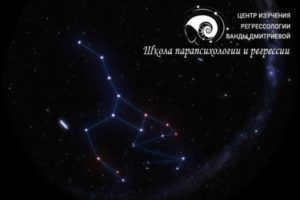
When the subject of stars and galaxies comes up, people inevitably start to ponder “is there intelligent life out there?”. I believe there isn’t a person in the entire world who, when in a serene location with a view of the stars on a clear night, doesn’t experience some sort of emotion.
Let’s attempt to comprehend and grasp together what is so captivating about these constellations. To understand what causes one to simply feel a sense of awe-inspiring beauty, and to contemplate the vastness of the Universe.
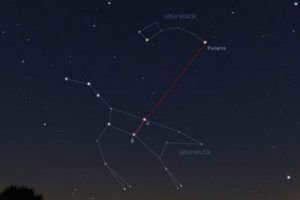
The constellation known as the Big Dipper, consisting of seven bright stars in the northern sky, has always captivated people from various civilizations.
Throughout history, the Big Dipper has been situated near the north pole of the world, with its stars remaining visible at all times. Different civilizations have referred to these stars as part of the same constellation, albeit using different names.
Ancient Egypt associated the Big Dipper with the hind leg of a bull, depicting it as such in the Dendera zodiac.
In China, the seven prominent stars in the north that make up the Big Dipper represent the carriage in which the Great Heavenly Emperor travels across his celestial empire.
Native Americans believed that the stars in the handle of the Big Dipper represented three hunters in pursuit of their prey, which could be a bear, wolf, or deer.
In the Slavic and Muslim cultures, the Big Dipper constellation was also seen as a carriage, used either for economic or ritual purposes. In some cases, the stars were even associated with practical household objects like a ladle or a drinking vessel.
Ancient Greeks, on the other hand, associated the Big Dipper constellation with the cold north and the bears that inhabited those regions. This led to the creation of the Big Dipper constellation in the circumpolar sky, followed by the formation of the Little Dipper constellation.
Subsequently, this interpretation was adopted by all European cultures, following the influence of the Greeks.
A small taste of mythology
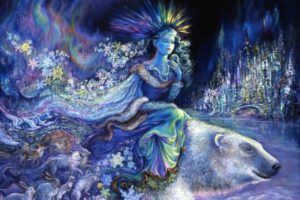
Callisto, the nymph who was a companion of Artemis, is represented by the constellation of the Big Dipper. It is said that Artemis and her companions must remain pure and chaste.
Callisto angered Artemis when she lost her virginity, resulting in the goddess transforming her into a bear and sending dogs after her. In order to save her, Zeus had to bring her to the heavens.
However, the story has a darker twist: it is possible that Zeus himself, trying to hide his affairs from his jealous wife Hera, transformed Callisto into a bear and Artemis hunted her down, either by mistake or under the influence of the cunning and vengeful Hera.
It is conceivable, ultimately, that Hera herself, seeking revenge, transformed Callisto into a constellation.and was pursued by Callisto’s son Arcadus mistakenly. At times, this tale also encompasses an unidentified girlfriend of Callisto, who was simultaneously transformed into the Little Dipper.
I observe that, generally speaking, the bear (along with the doe) is a revered animal of Artemis, and this might elucidate the inclination to involve this goddess in the myth.
Hence, in the myth, aside from the Big and Little Dippers, there exists the Volopassus-Arcadus, and even the Hound Dogs, his hunting dogs. All four constellations are situated in the same area of the celestial sphere.
According to Philemon, there is another story that tells of the infant Zeus being compelled to transform into a snake and his caretakers into bears when his father Kronus attempted to devour him, as was his custom.
As a result, the constellations Ursa Major, Ursa Minor, and Serpens came into existence. The Serpens constellation is not actually in the sky, it is likely the Draco constellation. This is suggested by their close proximity. However, it seems that this myth is simply a work of poetic fiction from the comedian.
There is also another version of the Thunderer’s birth and early years. It states that in addition to the goat Amalthea, the baby Zeus was also nursed by two bears in the mountains of Ida. It is even known that their names were Melissa and Helice. As a gesture of gratitude, they were eventually placed in the sky.
In later versions of the legend, Melissa and Helika are already nymphs; maybe Philemon mentions them? (According to an alternative version of the myth, the caretakers were two goats – Ega and Helika, depicted in the asterism Goats of the constellation Ascendant).
Arat, on the other hand, identifies them slightly differently: Kinsura and Helika. In any case, Helica is the Great Bear. This is where we encounter (or at least assume!) an intriguing reverse etymology.
The constellation known as the Big Dipper was called Helica by the Greeks – the term means shell, spiral, or curved line. Indeed, one can easily see a delicate twisted shell in the seven stars of the Dipper. Perhaps it was the name of the asterism that was assigned to the nymph, rather than the other way around?

Which choice will you make, to remain inactive and continue to stumble on the ground, or to take simple steps to help yourself?
BY JOINING QUANTUM REGRESSION SCHOOL:
- Acquire the skills to communicate with your subconscious;
- Tap into the depths of your memory;
- Develop the ability to influence past, present, and future events.
Which celestial bodies are inhabited by beings?
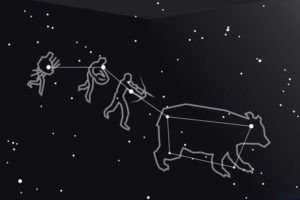
Today we are going to discuss civilizations that have no direct connection to the origin of humanity, but hold the position of intergalactic overseers and consequently make frequent appearances on Earth.
These are the civilizations originating from the constellations of Ursa Major and Ursa Minor, as studied by the Beyond the Edge and Truth project of the Celestial World School of Regression and Parapsychology.
"Upon intending to observe Ursa Major and Ursa Minor, I found myself in a space that closely resembled Earth. The environment was similar, with a night sky adorned with stars, mountains, and flowers growing in a field.
The recognition dawns that this particular celestial body belongs to the cluster known as the Ursa Major. I traverse a serpentine passageway and, once again, behold a lush landscape adorned with foliage, blossoms, and towering peaks. The terrain bears a striking resemblance to that of our own planet. The heavens… ah, the heavens exhibit a slight divergence, for even in the nocturnal hours, the sky is bathed in a luminous hue of lavender.
This is undoubtedly one of the most hospitable realms akin to our Earth. It boasts identical conditions, and it is christened Hela. Pristine air and a refreshing climate akin to Earth’s lofty mountain ranges.
An interstellar tether links the planets within the galactic formations. The denizens of these celestial bodies can traverse freely and interact with their own kindred. Vessels traverse the constellations, much like terrestrial buses ferry passengers between cities.
In the celestial sphere, there exists a transparent passage connecting the constellations of Ursa Major and Ursa Minor. Directly overhead, one can observe this celestial corridor facilitating interplanetary communication.

The inhabitants of the Big Dipper constellation possess a unique physical appearance, characterized by light skin, light blonde hair, and blue eyes. They are notably taller and larger than the inhabitants of Earth.
Conflict has arisen within this constellation, as there is an ongoing war between a nation of light-skinned individuals and a nation of darker-skinned individuals. Violence continues to escalate.
Within these constellations, each planet is populated by distinct groups of people. In the Big Dipper, the inhabitants exhibit light skin and blue eyes, while in contrast, there are individuals with darker skin, black hair, and dark eyes.
On a planet located in the Little Bear constellation, the climate is hotter and drier. The diversity of plant life is limited, and there are numerous active volcanoes present.
Could the Earthlings be a creation of the inhabitants of the Small and Big Dipper?

When asked about the interaction between Earthlings and the inhabitants of the Big and Little Dipper, a vision appeared of a flying vehicle descending between the mountains. This vehicle reaches places untouched by human feet, where they remain unseen.
These aircrafts bring equipment for control and surveillance. However, the control tasks of individuals from different civilizations vary. Light individuals watch over “light” individuals, while dark individuals watch over “dark” individuals… but this occurs on a genetic level. This information remains hidden from ordinary people.
The Earthlings are only observed by the observers who have benevolent intentions. Even though there are more militant individuals in the Little Dipper, they too harbor no aggression towards the Earthlings. However, the dark individuals have a fascination with warfare and strategies.
It becomes evident that the Earthlings hold the people from the Big and Little Dipper in high regard, considering them as deities. The Gods from these constellations see us as “less evolved beings”.
I would be delighted if you discover something new about the significance of the Big and Little Dipper for the Earth and its inhabitants in this article. What is the connection between us humans and the super-humans from these constellations, and why are we so captivated by the world beyond the stars.
R.S.. Please share your knowledge and discoveries about the constellations with me in the comments section. Let me know what you have learned from reading this article. If you have any suggestions for further research topics or insights into the relationship between humans and superhuman constellations of the Big and Little Dipper, I would love to hear them.
Don’t forget to subscribe to our YouTube channel. By doing so, you will stay updated with the latest video news from the Center for the Study of Regressology. Our channel offers a variety of meditations, webinars, reincarnation studies, and other video broadcasts.
We value your opinion, so please leave a comment and let us know what you think….
If you appreciate the author’s work, the best way to show your gratitude is by sharing it with your friends.
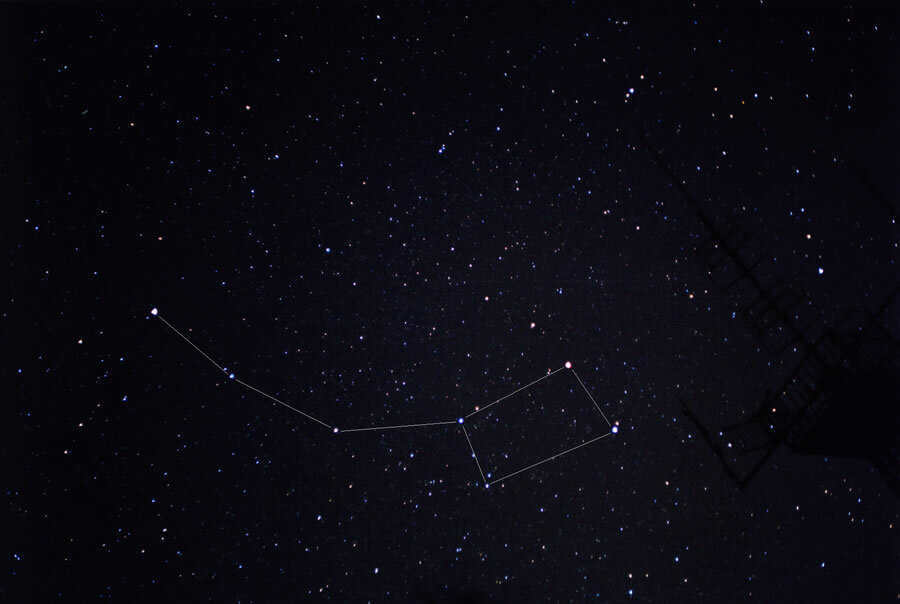
- Stars
The group of stars known as the Little Bear (Ursa Minor) holds a significant position in navigation, despite being the 27th largest constellation in the Northern Hemisphere and the 56th largest in terms of angular area on the celestial sphere. This is because the north pole of the world is currently located in the Little Bear, making it a crucial point of reference for navigation.
It is worth mentioning that the Little Bear is part of a constellation group that traces its origins back to its older sister, the Big Dipper[1].
There are exactly three constellations that directly border the Little Bear: the Dragon, Giraffe, and Cepheus.
The Little Dipper, being the most northern constellation, never disappears below the horizon not only in Russia, but also in all countries situated to the north of the Tropic of Cancer.
Finding the constellation in the night sky
The constellation can be seen in latitudes ranging from -10° to +90°. The optimal conditions for observing it are during late summer, autumn, and winter. It remains visible throughout the year in Russia. Adjacent constellations include Draco, Camelopardalis, and Cepheus.
The Ursa Minor, also known as the Little Bear, is a well-recognized constellation. However, locating it can be challenging due to the fact that only the two outermost stars of the Big Dipper are bright enough to be seen with the naked eye. To assist in the search, Polaris, also known as the North Star, can be used as a reference point. In the autumn, the Big Dipper can be found to the right and below its sibling constellation.
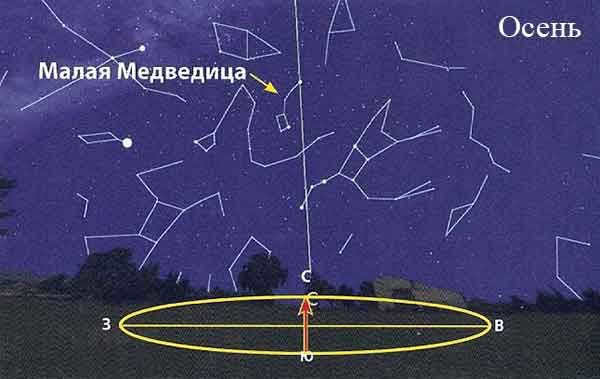
During the winter season, the Little Bear tilts downwards, causing its dipper to face the northeastern side of the horizon. Meanwhile, the Big Dipper can be seen to the right and positioned higher. To the left of the Little Bear, Cassiopeia is clearly visible.

During the summer, at midnight, the Little Dipper can be seen positioned above its elder sibling. On the right side, we can clearly observe the inseparable duo with Cassiopeia situated above and Perseus slightly below. On the left side, at a considerable distance, we can spot the Magpies and the Northern Crown.
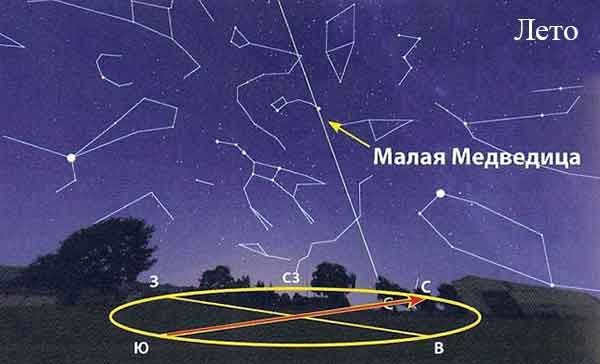
Legends surrounding the constellation
Each culture has its own unique tale about the origins of Ursa Minor.
The illustrious goddess Artemis decided to partake in a little merriment and ventured out on a hunting expedition. Being a deity, she was accompanied by her entourage of attendants, handmaids, and close friends. All of them were stunning, joyful, and youthful. And among this group of enchanting ladies stood out Callisto, the most beautiful, slender, and cheerful of them all. The young hunters had been searching for suitable game for such a long time that their laughter caught the attention of Zeus himself.
Zeus became infatuated with the stunning Callisto, but due to his strict rule that forbade his girlfriends and maids from getting married, he had to devise a clever plan. He decided to disguise himself as the goddess Artemis and approached Callisto.
As time went on, Callisto gave birth to a son named Arkad. The boy grew up rapidly, much to his mother’s joy, and developed into a skilled hunter. Everything was going smoothly until the jealous Hera discovered the clandestine relationship between Zeus and his secret spouse.
In a fit of rage, she cast a curse upon her rival, transforming her into an elderly and hideous bear.
One day, Arkad ventured out for a hunting expedition. To his surprise, he stumbled upon his mother who had taken the form of a bear. He aimed his bow and released the arrow… A disastrous outcome seemed inevitable, as Arkad was renowned for his unparalleled accuracy. However, Zeus harbored such profound affection for the exquisite Callisto that he continued to watch over her even in her dreadful metamorphosis, cherishing her former beauty. The divine intervention managed to divert the arrow, yet it narrowly missed its mark.
Filled with fear, Zeus devised a plan to immortalize his beloved maiden in the celestial realm. In order to keep mother and son together, he transformed Callisto into a bear cub named Arkad. Swiftly, so as not to be impeded by Hera, Zeus seized them by their tails and hurled them into the heavens.
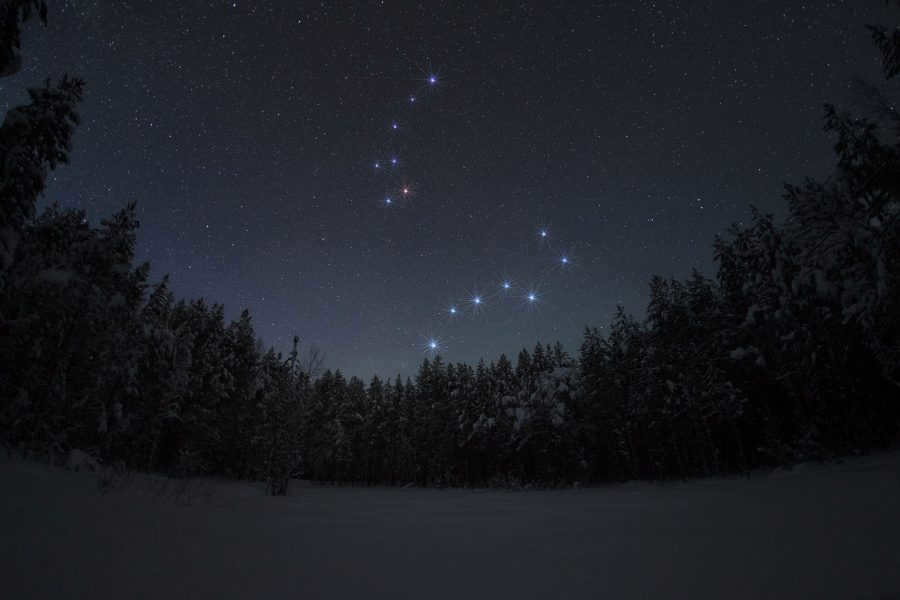
Ever since then, they have shone together, the mother and son, known as the Big and Little Bears. The only thing that has changed is that their tails have grown longer.
Even in far-off India, there are stories about Polaris, which is a part of the Little Bear constellation.
Once upon a time, there was a king who had two wives. The older wife, Suniti, was beautiful and kind-hearted, while the second wife, Surachi, was beautiful in appearance but grumpy and angry. Both of them had sons and named them Dhruv and Attama.
The younger wife began to wonder who would rule if something were to happen to the king. According to the law, the eldest son, Dhruv, would be the ruler.
Afterward, she made the decision to eliminate Suniti and her son. She requested for them to be sent away from the palace. The king had strong affection for his younger wife and thus dispatched the unfortunate individuals to the forest.
As time went by, Dhruv matured and began to inquire about his father. Suniti disclosed everything to him without any concealment. Dhruv yearned to see his father, so Suniti did not oppose and Dhruv embarked on his extensive journey.
The king was overjoyed to see him, but Surachi witnessed it. In a fit of rage, she snatched the boy from his father’s embrace and returned him to the forest. She even forbade him from coming near the palace.
The boy walked for numerous days, contemplating something. And all of a sudden, he inquired who was wiser and mightier than the king.
His mother informed him about Sage Narayana, who resided in the distant north.
Dhurv made a decision to locate the esteemed Narayana, and during the period when his mother was in a state of slumber, he embarked on a nocturnal quest to find him.
It turned out to be quite a lengthy voyage, but eventually, the young boy arrived at the point where the celestial dome of the north commences.
He encountered a recluse and inquired about the sagacious Narayan. The recluse counseled him to remain by his side and engage in joint supplication, focusing solely on Narayana.
Dhurv settled himself in proximity to the recluse, and together they implored.
The potency of their contemplations was so formidable that it aroused the attention of the Seven Sages. They ventured forth to locate the source and upon beholding a diminutive boy, they resolved to assist him in meeting the deity Vishnu (who was concealing himself under the guise of Narayane).
God Indra, the mighty ruler of the celestial realm, became aware of a young boy’s desire to meet Vishnu. Suspecting that they might be plotting to usurp his throne, Indra began to hinder the boy and the sages in every possible way, sending snakes and demons to thwart their efforts. However, the courageous men remained undeterred, continuing their meditations despite the challenges.
Before long, Vishnu himself took notice of their unwavering determination, and he was pleased with Dhruva’s persistence. Assuming the guise of Suniti, Vishnu descended to meet the boy.
When the deity inquired about his desires, Dhruva remained silent but gazed sadly into his eyes. Vishnu understood the depth of his longing and transformed him into a radiant star, positioning him high above where evil and injustice could not touch him. And as a testament to his unwavering resolve, the star in the sky remains fixed in its position – the Pole Star.
The boy gathered the wise men together and arranged them in a row, forming a bucket with 7 shining stars. These stars are part of the constellation known as the Little Bear.
The most radiant stars in the Little Bear constellation.
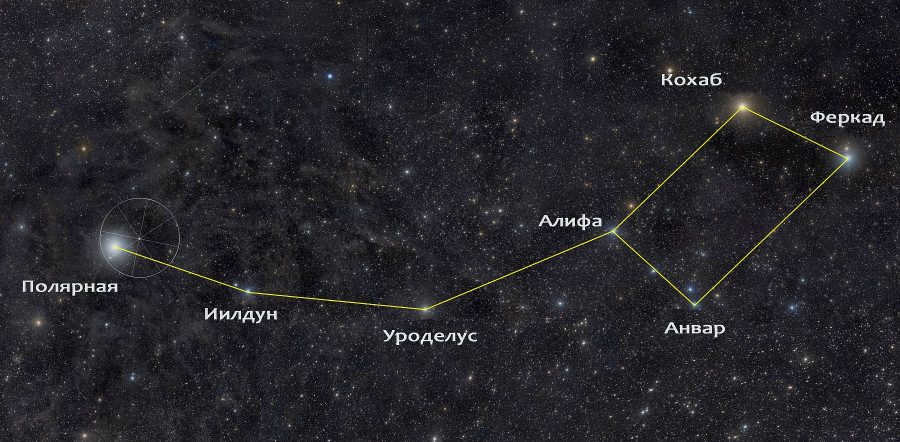
The Little Bear constellation is home to a single star that has been discovered to have a planet orbiting it. The most prominent star within the constellation is Polaris, also known as Alpha of the Little Bear.
Polaris – Alpha of the Little Bear
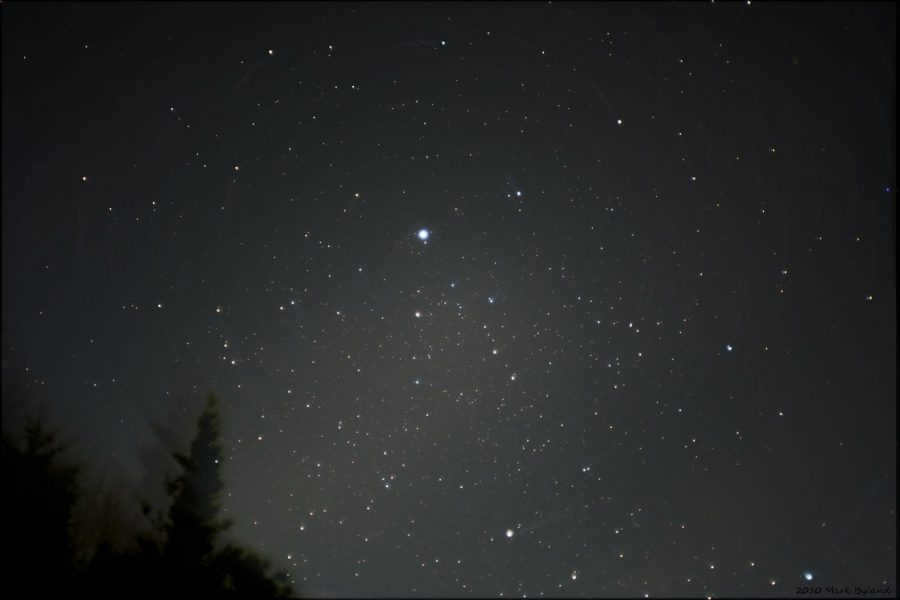
Polaris, the nearest bright star to the North Pole since medieval times, is the most luminous star in the constellation of Ursa Minor. It has an apparent magnitude of 1.985 and falls into the spectral class F7 Ib-II. This star is situated approximately 434 light-years away from Earth.
Alpha Ursa Minor is, in fact, a multiple star system consisting of a brilliant giant called α UMi A, along with two smaller stars, α UMi B and α UMi Ab. Additionally, there are two more distant stars, α UMi C and α UMi D.
The most luminous component within the α UMi system is a bright giant (II) or supergiant (Ib) star of spectral class F8. It possesses a mass six times greater than that of the Sun. Polaris B, also known as α UMi B, was discovered by William Herschel in 1780. It is a main sequence star of spectral type F3, while α UMi Ab is a dwarf star in a very close orbit.
When Ptolemy observed Polaris, it had an apparent magnitude of three, but currently it is 2.5 times brighter.
Due to its luminosity and its close proximity to the celestial pole, Polaris plays a crucial role in celestial navigation and has been referred to by various names throughout history.
The Star Kohab or β of the Ursa Minor Constellation
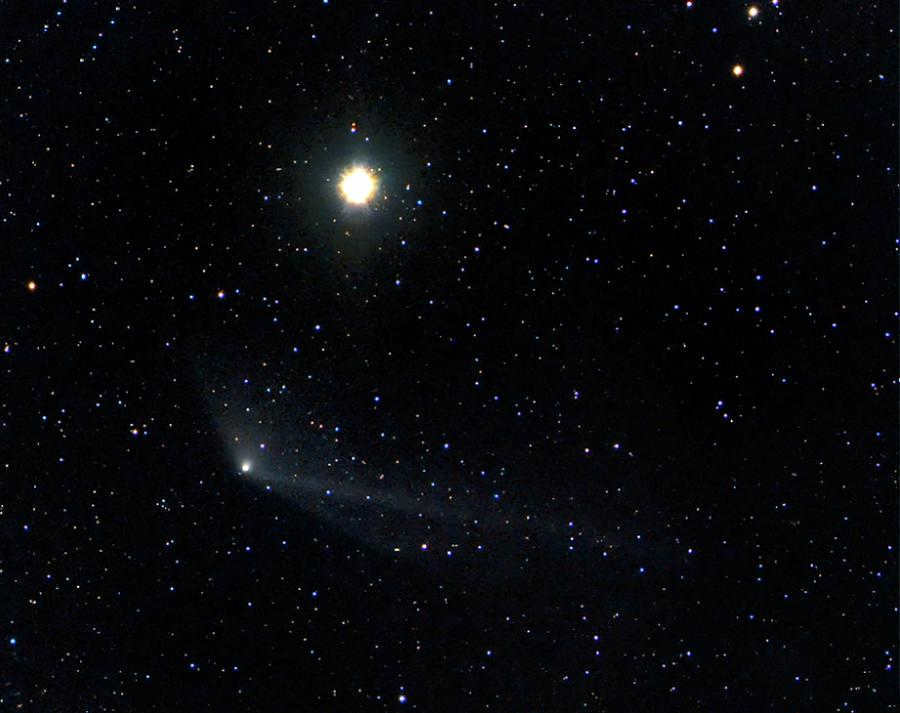
The Little Bear contains a massive star known as β. This star belongs to the K4 III spectral type and has a visual magnitude of 2.08. It is located approximately 130.9 light-years away from our solar system. Within the Little Bear, β is the most prominent star in terms of brightness. Kohab, as it is also known, is 130 times brighter than the Sun and has a mass approximately 2.2 times that of our own star.
Kohab and Ferkad, two stars within the Little Bear, have earned the nickname “keepers of the pole” due to their apparent rotation around the pole. Between 1500 B.C. and 500 A.D., these two stars served as the polar stars, being the closest bright stars to the North Celestial Pole. However, they were not as close to the pole as Polaris is today.
The traditional name of this star, Kohab, comes from the Arabic word al-kawkab, which means “star.” It is an abbreviation of al-kawkab al-šamāliyy, which translates to “North Star.”
The celestial body known as Ferkad or γ of the constellation Ursa Minor

Gamma of the Little Bear is a star of type A with an apparent magnitude of 3.05. It is situated at a distance of about 487 light-years from us. Its stellar classification is A3 lab, indicating that it is an intermediate supergiant. This star rotates very quickly, with an estimated rotational velocity of 180 km/s. Its radius is 15 times that of the Sun, and it is 1,100 times brighter than our Sun.
The star’s traditional name, Ferqad, is derived from the Arabic word “farqad,” which means “calf.” This name is a shortened version of the phrase “afafa al farkadayn,” which translates to “dim one of the two calves.”
Yildun is the traditional name of Delta of the Little Bear, a white main-sequence dwarf with a spectral type of A1V. This star is situated about 183 light-years away from our planet. Its visual magnitude is measured at 4.35.
The term Yildun originates from the Turkish word “yıldız”, which translates to “star” in English. Occasionally, you may come across alternative spellings such as Vildiur, Jildun, Yilduz, and Gildun.
The celestial body known as Alif Al Farqadin or ζ of the Little Bear takes center stage
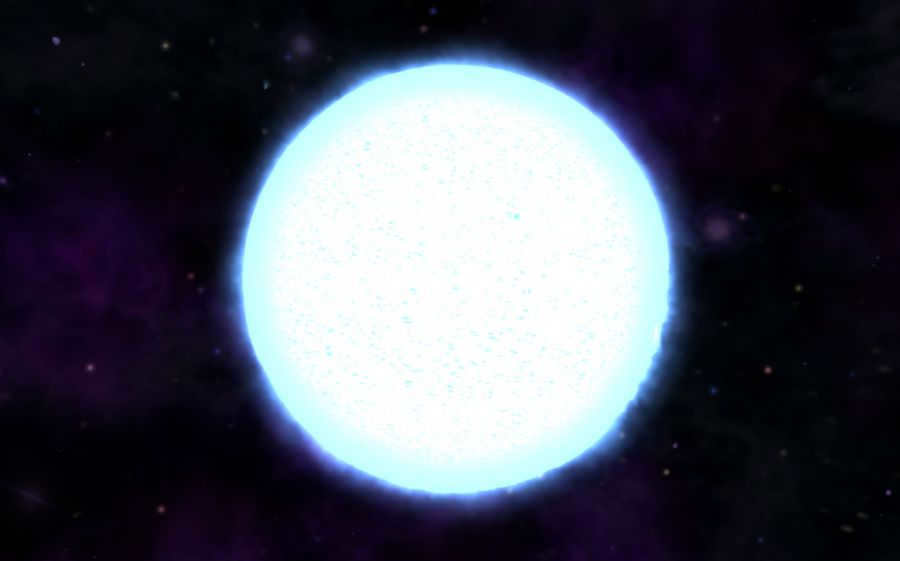
The Little Dipper’s zeta star is classified as an A3Vn main sequence dwarf. It is currently in the process of evolving into a giant star, with a mass that is 3.4 times that of the Sun and a luminosity that is 200 times greater. The surface temperature of the star is approximately 8,300 degrees Celsius.
Alifa Al Farqadin has a visual magnitude of 4.32 and is located 380 light-years away from us.
The star’s traditional name is derived from the Arabic term afafa al-farqadayn.
Celestial bodies
The Small Bear (PGC 54074, UGC 9749) is a small elliptical galaxy with a visible brightness of 11.9 and a distance of 200,000 light-years. It is a galaxy that orbits around the Milky Way. The majority of the stars in this galaxy are aged and there is a minimal amount of observable star creation.
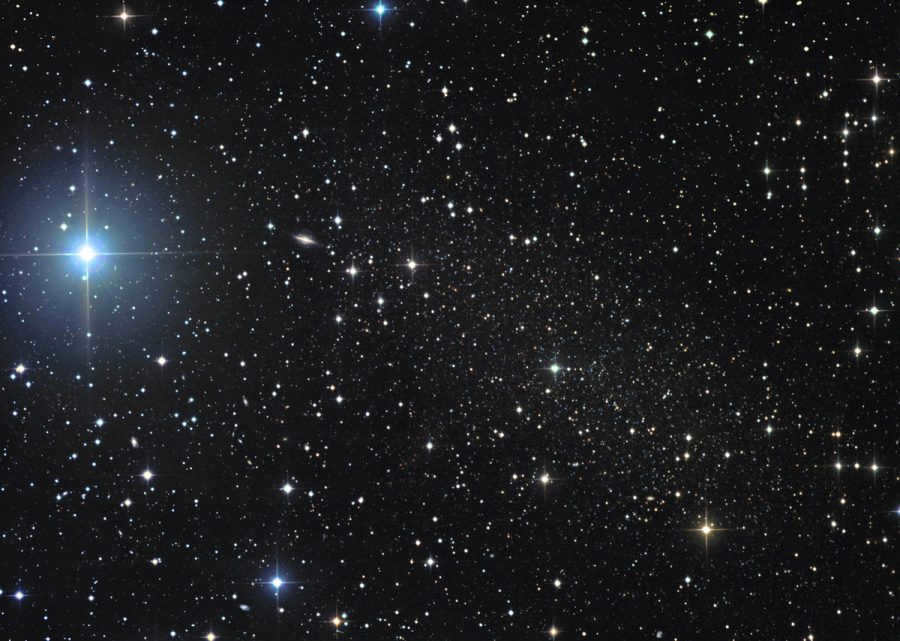
Discovered in 1954, the Hubble Space Telescope confirmed in 1999 that 11 billion years ago, the galaxy underwent a 2 billion year formation period.
If you want to explore the Little Bear constellation in the northern hemisphere in more detail, you can use our photos, as well as ZD models and an online telescope. For those who prefer to search independently, a star map will be helpful.
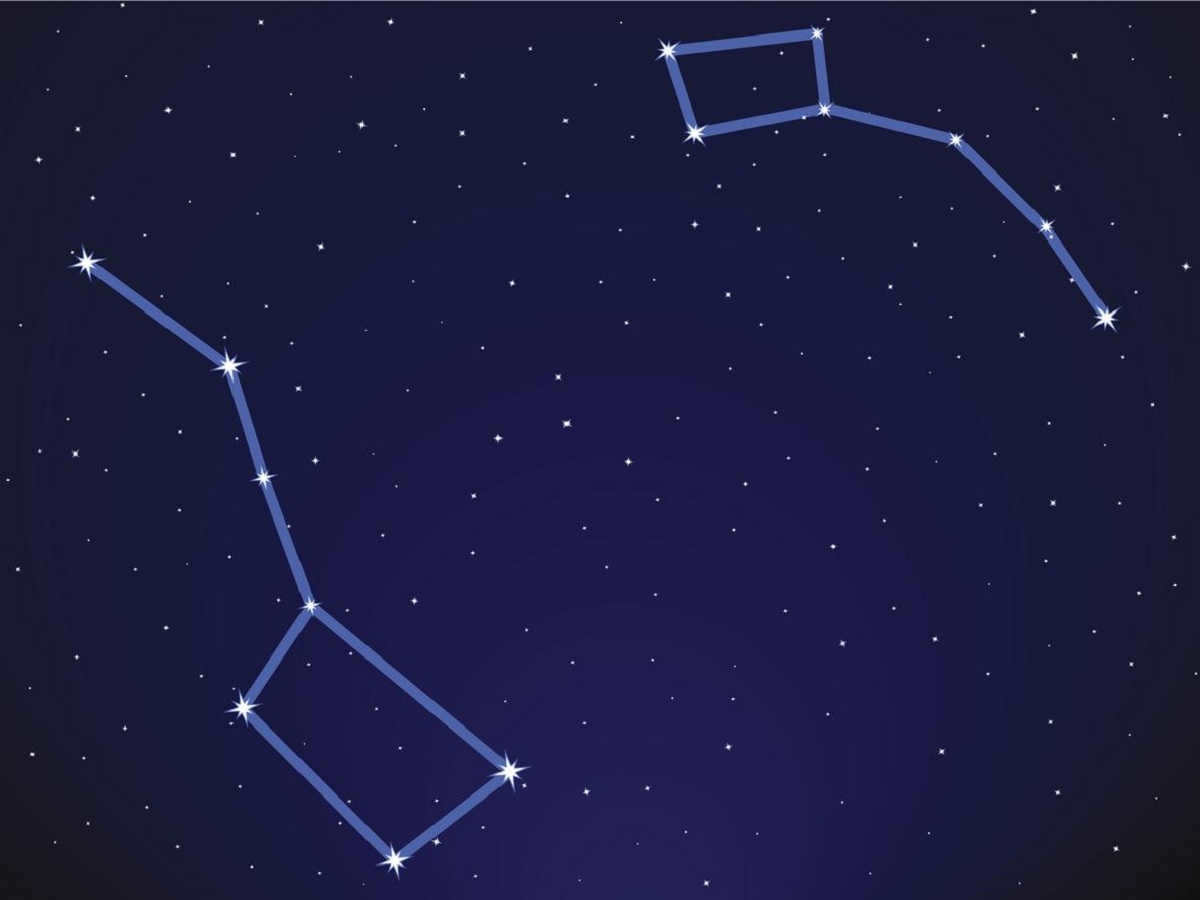
The constellation known as Ursa Minor holds great significance for astronomers. Situated in the northern hemisphere, it remains visible throughout the year from Europe. Comprised of numerous stars, its primary one is Polaris. This star holds immense importance for astronomers, serving as a pivotal axis for the rotation of many other celestial bodies. Furthermore, in the Indian Vedic legend, Polaris assumes a crucial role as the leader among the group of deities.
This article aims to provide a comprehensive overview of the characteristics, functions, and significance of the Ursa Minor constellation.
Main features
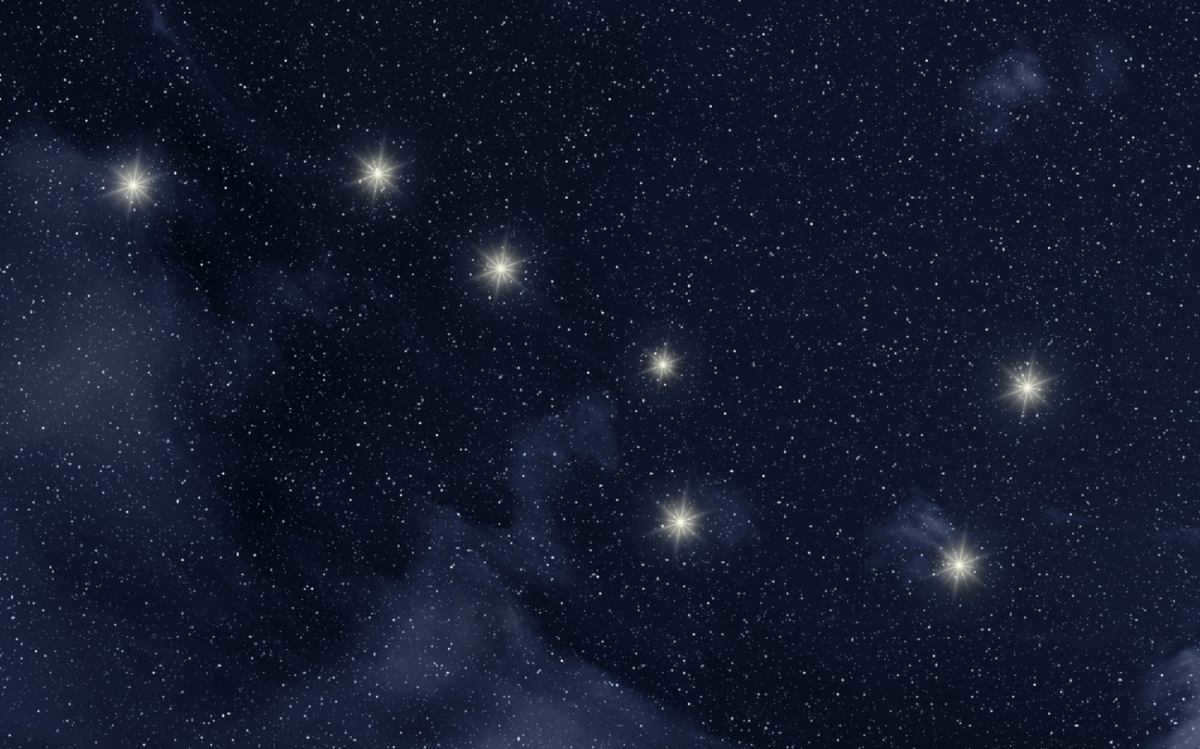
The configuration of the Little Bear bears a resemblance to that of the Big Dipper. Nevertheless, unlike the Big Dipper, its axis is not straight but rather contorted in a backward fashion. The primary star in this constellation, Polaris, remains fixed in its position within the nighttime sky. The altitude at which the star is situated in the northern region corresponds to the observer’s latitude. This constellation is comprised of seven stars that resemble the shape of a car, with four stars forming the body of the car and the remaining three stars forming the car’s handles.
The most well-known feature of the Ursa Minor constellation is Polaris, which is situated on an extension of the Earth’s axis, causing it to remain fixed in the sky and serve as a guide to the geographic north pole. It is used by navigators as a reference point during their journeys. Aside from Polaris, the Ursa Minor constellation lacks noteworthy features for amateur astronomers. Due to its position, Ursa Minor can only be observed in the northern hemisphere, but it can be seen year-round in that region. Alongside its counterpart, the Ursa Major constellation, it is one of the distinguishing features of the northern hemisphere night sky.
There are numerous theories regarding the origin of the Little Bear in Greek mythology. One theory suggests that Phoenis, who had a fascination with Zeus, was transformed into a bear by Artemis. This tale bears a striking resemblance to the story of Callisto. It is speculated that the two stories may be linked, with Zeus turning Callisto into the Big Dipper and Artemis later transforming her into the Little Dipper. This incorporation of the two characters could indicate a catastrophic event within the first story.
Callisto, a stunning fairy, found herself captivated by Zeus. The two of them became parents to a son named Arkas. Out of sheer envy, Zeus’ wife Hera transformed Callisto into a bear. Many years later, Callisto crossed paths with her son, who failed to recognize her in her new animal form and sought to slay her. To protect her, Zeus opted to transform his own son into a bear and position them both in the heavens, giving rise to the constellations known as the Big Dipper and the Little Dipper.
Little Bear’s main characters
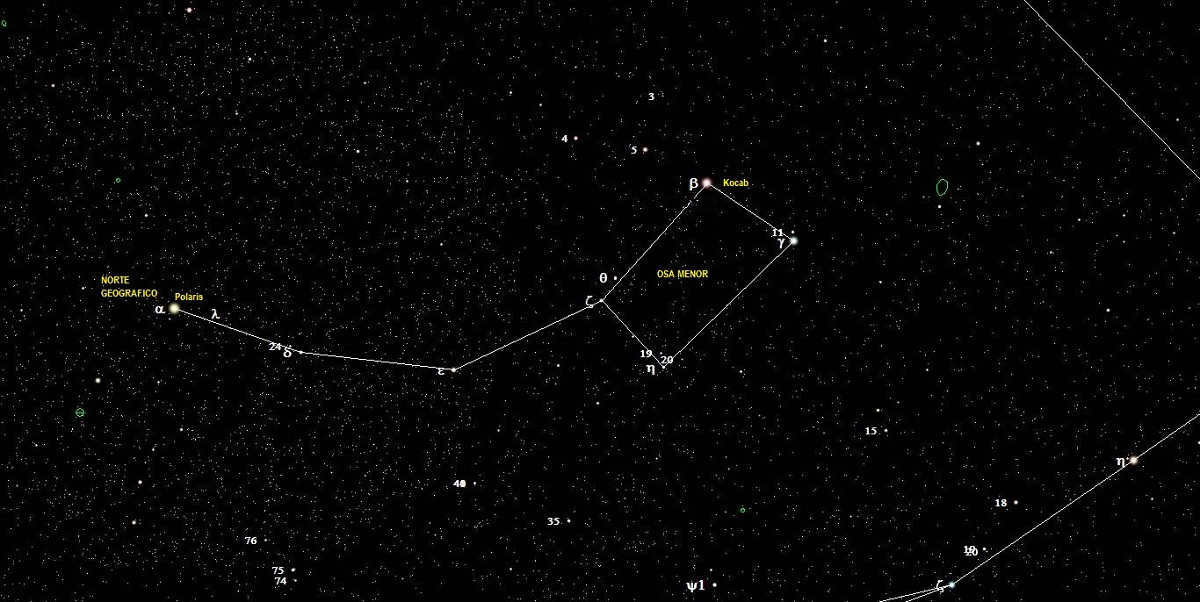
Let’s summarize the key stars of the Ursa Minor constellation:
- α Ursa Minor (Polaris, Polaris, Polaris or Polaris), the brightest star in the constellation, is a yellow supergiant and a variable Cepheid with a magnitude of 1.97.
- β The Little Dipper (Kochab) has a magnitude of 2.07. It is an orange giant star that was previously used as Polaris.
- γ Ursa Minor (Pherkad) has a magnitude of 3.00. It is a white variable star of the Delta Scuti type.
- δ Ursa Minor (Yildun or Fercard) is a white star with a magnitude of 4.35.
- ε The Little Dipper is an eclipsing double and variable RS Canum Venaticorum with a magnitude of 4.21.
- Calvera is the informal designation given to the nearest neutron star to Earth.
The significance of Polaris
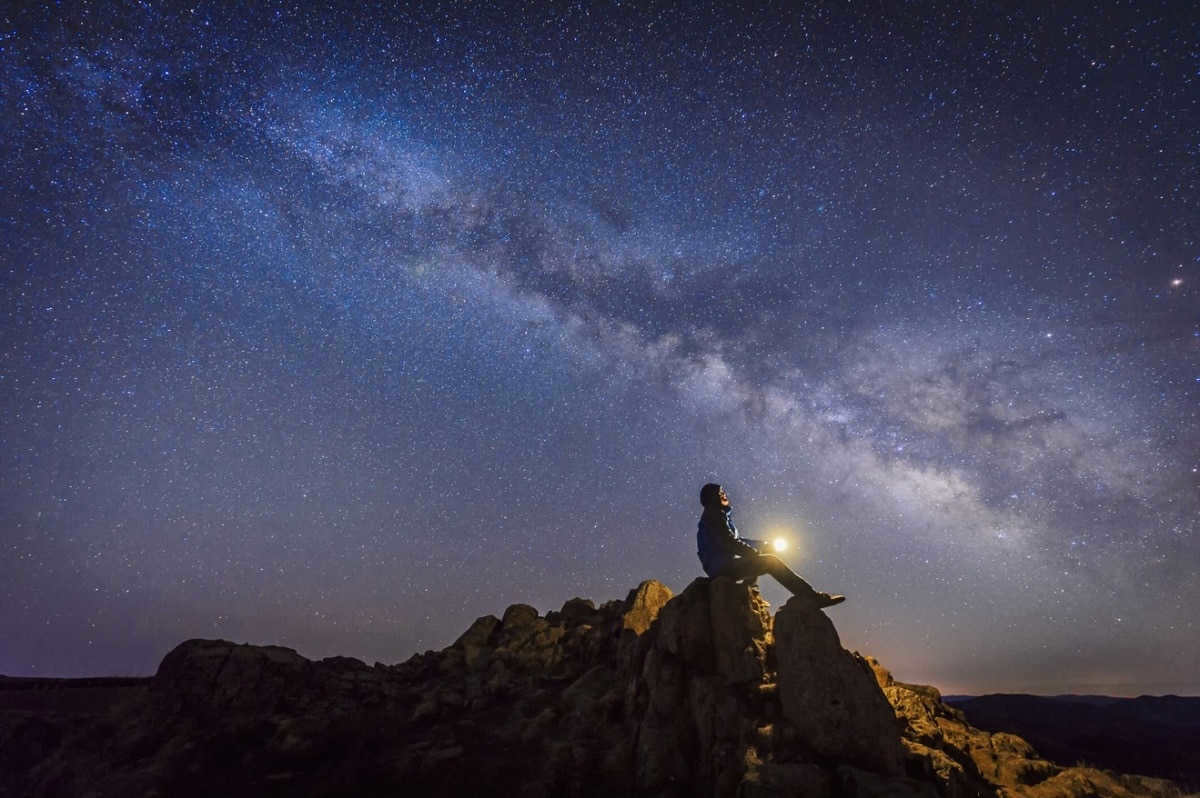
As stated previously, Polaris is situated within the constellation of Ursa Minor. This particular constellation is visible throughout the entire year in our night sky. However, it can only be seen by those residing in the northern hemisphere. Ursa Minor is comprised of a total of 7 stars, with Polaris being one of them. Polaris can be easily identified due to its bright, yellow giant appearance, which is larger than the Sun. Despite its apparent size, it is actually located much farther away, preventing us from perceiving it as a large star or allowing it to provide us with the same level of illumination as the Sun.
Before the advent of radar, GPS, and geographic positioning systems, Polaris served as a navigational landmark. This could be attributed to its ability to guide sailors to the geographic pole of the world.
How to locate the North Star
The North Star, also known as Polaris, is a fixed celestial body. While other stars appear to move across the sky, the North Star remains in a fixed position. It can be easily identified as it is situated near the Big Dipper. These two constellations share similarities, as they both consist of seven stars and form a shape resembling a car.
It stands out from the rest of the stars due to its stationary position in the sky. While other stars revolve around the Earth’s axis of rotation, the polar star remains still. Just like the planets and the sun, the stars complete a 24-hour journey. Therefore, if we want to determine the polar star’s position at a specific time, we need to observe the Big Dipper. This is because this constellation is relatively easy to spot, and Polaris is located nearby.
To locate the polar star, we can simply draw an imaginary line using two stars in the Big Dipper constellation as reference points. These stars, known as Merak and Dhube, are quite easily recognizable in the night sky. Once we have identified them, we can draw another imaginary line that is five times the distance between these two stars, leading us to Polaris.
Throughout history, sailors have relied on this star as a navigational marker during their voyages across the sea. It should be noted that this star was only visible to those who sailed through the Northern Hemisphere. Thanks to this guiding star, countless sailors were able to accurately locate different cities.
By familiarizing yourself with this information, you can gain a deeper understanding of the Little Bear constellation.
The content of this article complies with our editorial ethics guidelines. If you find any errors, please click here to report them.
Full Article Summary: Network meteorology " astronomy " Bear
The constellation can be seen all year round from Russia. While in the southern regions during autumn, its lower part may not rise above the horizon, the prominent feature of the constellation, the Big Bucket, which is composed of 7 bright stars, remains visible and never sets.
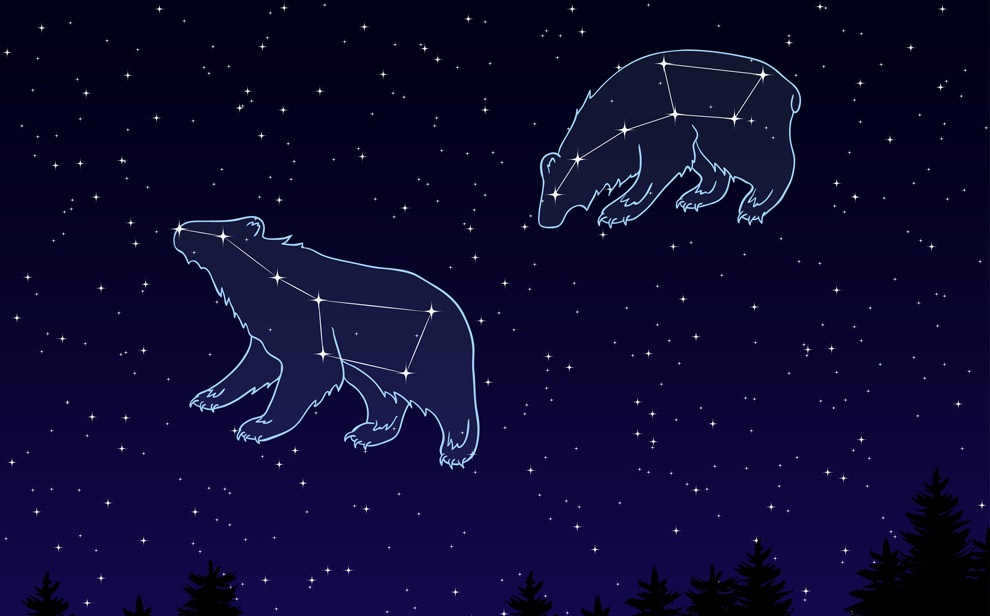
An overview of the constellation’s historical background
The striking arrangement of stars that form the Big Dipper has captivated humans since ancient times, giving rise to a rich mythological narrative.
By observing the rotational movement of this asterism around a fixed point in the sky, people were able to determine the time at night. The pointer stars also assisted in locating Polaris and establishing directions.
In ancient Egypt, the constellation was associated with the hip of Seth, a god who was defeated and dismembered by Horus in retaliation for his father’s murder. Some of Seth’s remains were scattered across the heavens.
The ancient Greeks, who were the first to give the constellation its classical name, associated its appearance with the myth of the nymph Callisto, one of Zeus’ lovers, who bore him the skilled hunter Arcas.
Envious Hera transformed the beautiful nymph into a hideous bear, and her son nearly killed her while hunting. Zeus intervened and stopped Arcas’ spear, and placed the mother and son in the celestial halls in the form of the Big and Little Bears.
The Greek writer Aratus of Soli (3rd century B.C.) was the first to observe that seafarers used the Big Dipper for navigation.
Claudius Ptolemy, in his Almagest catalog (c. 140 AD), expanded the number of included objects to 28.
The rough outlines of the modern boundaries were delineated in Johann Bayer’s Uranometria (1603), a work by the German astronomer. The final and officially recognized boundaries were established in 1930 by Eugene Joseph Delporte, a Belgian. At the congress of the International Astronomical Union in 1922, the scientific name of the constellation (Ursa Major in Latin) and its abbreviation, UMa, were adopted.
The Big Dipper’s Constellations
The Big Dipper is the most prominent part of the constellation’s figure, stretching from the nose to the middle of the back. It is important to note that the common misconception that UMa consists of 7-8 stars is incorrect.
In this region, only objects visible to the naked eye in northern latitudes can be counted, reaching up to 120. However, due to the unique properties of air refraction, this number can increase to 250 from Hawaii.
The use of modern telescopes and interplanetary probes has revealed even more celestial objects in the constellation’s vicinity, including distinct galaxies, nebulae, and star clusters.
Famous stars
The collection consists of the 7 most brilliant stars, which include:
- Dubhe (Alpha of the Big Dipper). According to recent information, it is a constellation made up of three components. Component A is an aged orange giant with a mass 4.25 times that of the Sun, a radius 17 times greater, and a luminosity 316 times greater. Component B is a white dwarf situated 23 astronomical units away from the main star and has parameters similar to the Sun (1.5 times more massive and 1.3 times larger in radius). Component C is not well-studied, but it is known to be 8 thousand astronomical units away from the first two objects.
- Merak is a celestial body whose mass is 2.7 times greater than that of the Sun, while its radius is 3 times larger. Additionally, its luminosity surpasses that of our star by a factor of 63. Scientists estimate its surface temperature to be around 9,400 ºC. In conjunction with Dubhe, Merak forms a pair of celestial pointers: if you draw a line connecting them, it will precisely point towards Polaris, the North Star. The distance between Merak and our solar system is approximately 79.7 light-years.
- Mizar and Alcor are renowned for being the first double star system to be discovered in the field of astronomy. In the early 20th century, astronomers made the groundbreaking observation that both Mizar and Alcor are actually binary systems, consisting of two stars each. In ancient times, these stars were believed to resemble a Horse and Rider, which is why they are sometimes referred to by that name.
- Fekda is a youthful celestial body (age of 300 million years) that resides 83.2 light-years away. It surpasses the Sun in both mass (2.6 times) and radius (3 times). The temperature of Fekda is approximately 10 thousand degrees Celsius.
- Megrez is an unremarkable star emitting excess infrared radiation. Its mass is only 63% larger than that of the Sun. Megrez is situated 58.4 light-years from our planet.
- Benetnash marks the eastern boundary of UMa and is one of the most scorching stars visible to the naked eye, with a temperature soaring to 19,700 degrees Celsius. The Arabs referred to it as the “leader of the mourners” since, in their cosmogonic myths, the Big Dipper was associated with a mourning procession.
Once every 100,000 years, the appearance of the Bucket undergoes significant changes. This phenomenon occurs because the outermost stars, Dubhe and Benetnash, move in space in the opposite direction compared to the 5 inner stars.
An intriguing asterism in Ursa Major consists of 3 pairs of stars that are identical to each other. These stars are aligned in a straight line and are equidistant from one another. In the field of astronomy, this formation has been named the Three Leaps of a Gazelle, adding a touch of poetry to the scientific study of the stars.
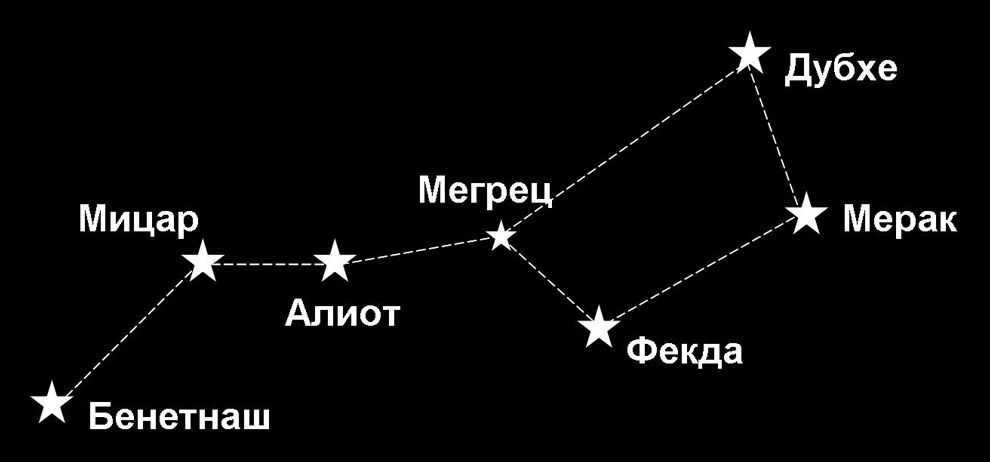
Deep Space Entities
One of the notable entities in the far reaches of space is the spiral-shaped galaxy Messier 81, situated at a distance of 11.8 million light years from our location. Due to its relative proximity, it has become a preferred subject of examination for both experts and amateur stargazers.
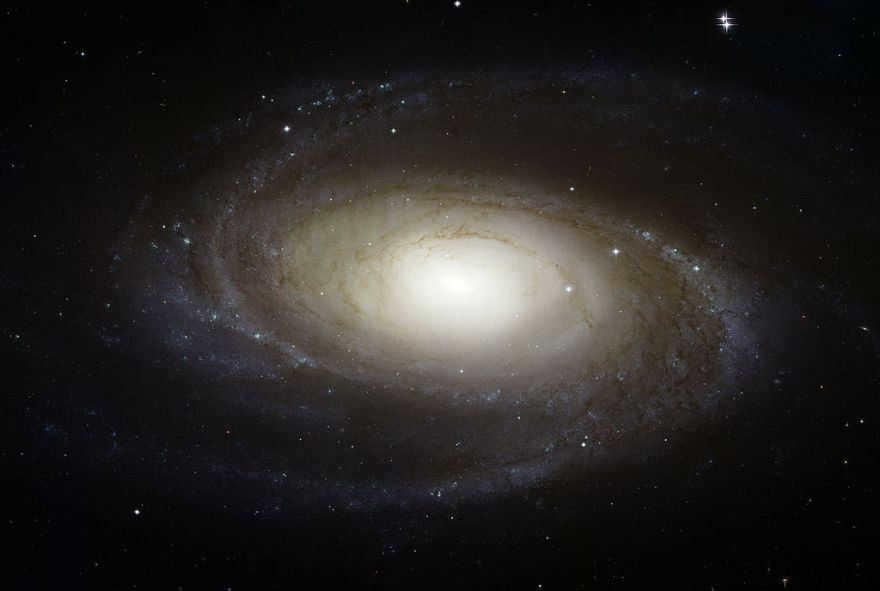
Messier 82, the neighboring galaxy of Messier 81, is known for its accelerated formation of stars. The rate at which new stars are born in Messier 82 is 10 times higher than in the Milky Way and other galaxies.
This phenomenon is believed to be the result of a collision between Messier 81 and Messier 82 that took place 200 million years ago. During this collision, Messier 82 experienced a powerful tidal wave of gas, which triggered the formation of new stars in its galactic nucleus. As a result, Messier 82 now contains 197 large star clusters.
Both Messier 81 and Messier 82 were discovered in 1774 by Johann Bode, who observed them as blurry spots.

The Owl Nebula (M 97), which is located about 2.3 thousand light years away, was another fascinating object of investigation. It was first observed in 1781 by Pierre Mechene, a French astronomer, and was given its name because of its two brilliant spots that resemble the eyes of a nocturnal bird.
Moreover, in this area, two of the most remote galaxies from our Solar System were discovered in 2013 and 2016. The light emitted by these galaxies took approximately 13.2 and 13.4 billion years to reach Earth, respectively.
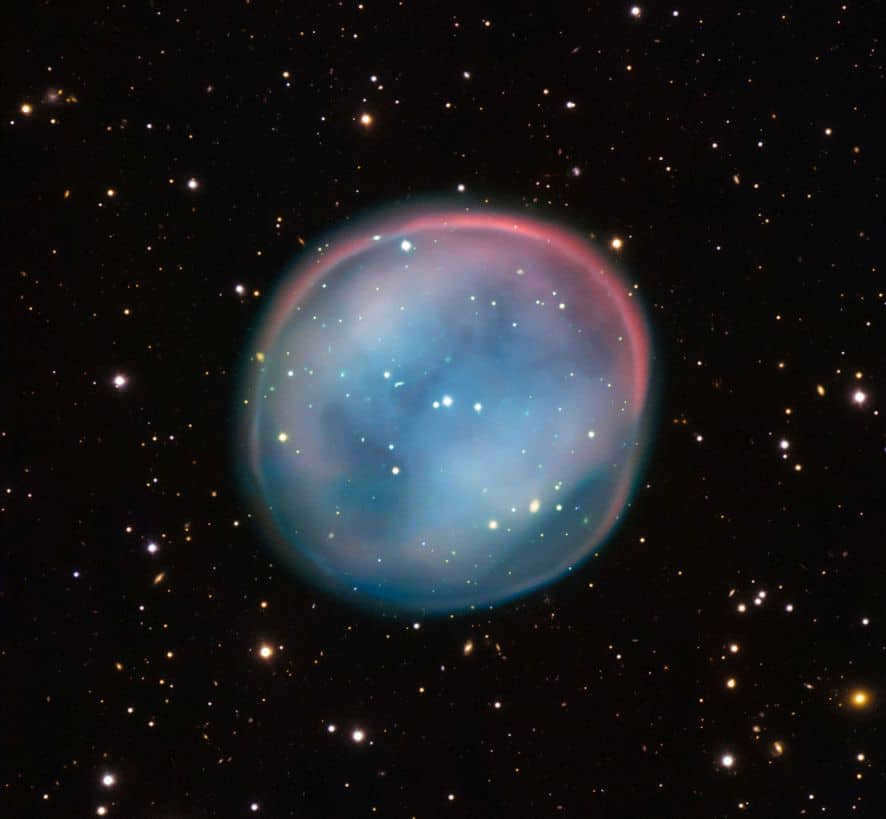
Constellation Location and Maps
By considering the different seasons, it becomes quite simple to locate the Big Dipper in the night sky. This phenomenon occurs because of the Earth’s movement around the Sun, which changes the point of observation, as well as the planet’s tilt as it rotates on its axis.
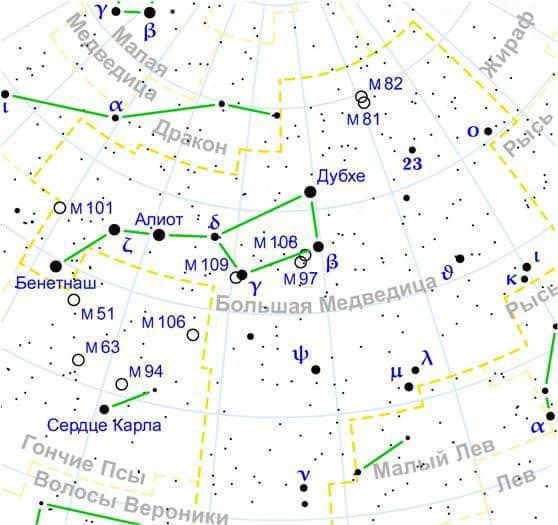
During the autumn and winter seasons in the central part of Russia, the Big Dipper constellation can be observed in the northern sky, appearing in its usual position. To locate it, all you need to do is locate the bright ladle shape, which marks the beginning of the constellation, and the Three Leaps of the gazelle serve as its lower boundary.
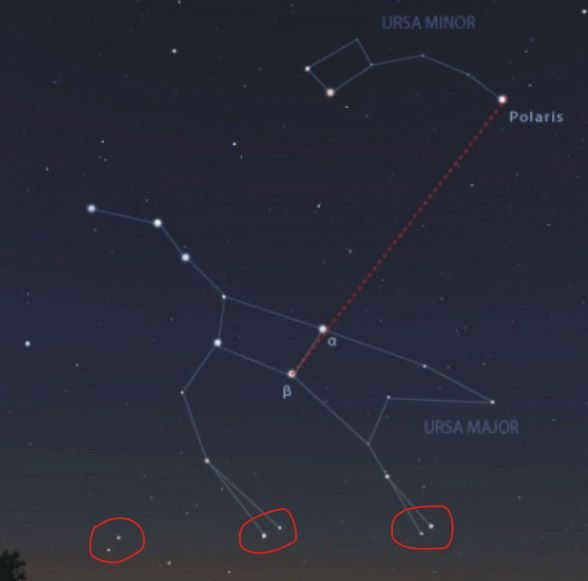
The constellation’s most effective delineation is presented in the design put forth by H. Ray, an American researcher. His depiction accurately captures the bear-like characteristics, which are not as evident in other interpretations.
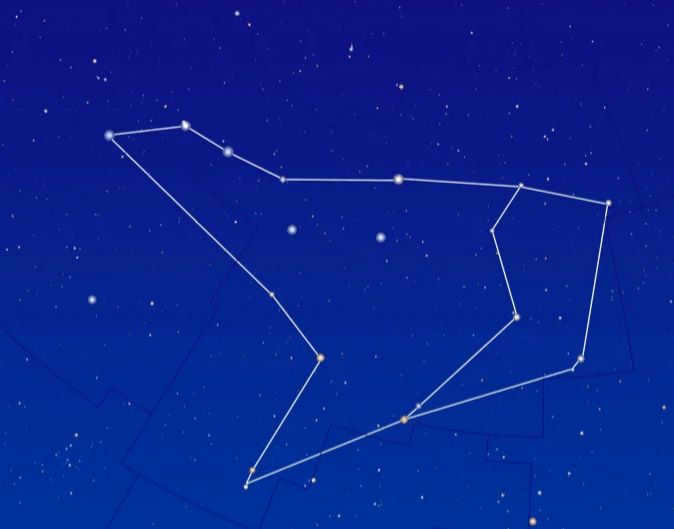
The arrangement of stars in the Big Dipper constellation was proposed by the American researcher H. Rey. The image was sourced from avatars.mds.yandex.net.
What is the optimal time to observe the Big Dipper?
The most favorable period for observing UMa is during the months of March and April. During this time, around 11:00 PM, the constellation can be seen directly above the observer’s head, at the zenith, and its entire form is clearly visible.
Pointers can be used to locate Polaris, which helps observers identify the different directions of the world. If you mentally extend a line from the star to the horizon, it will point towards the north and assist in orienting yourself in space.
To find Arcturus, you can extend the arc formed by Aliot, Mizar, and Benetnash towards the south. If you continue further, you will come across Spica, which is the brightest star in the Virgo constellation. These reference points were utilized by navigators as landmarks in ancient times and the Middle Ages.
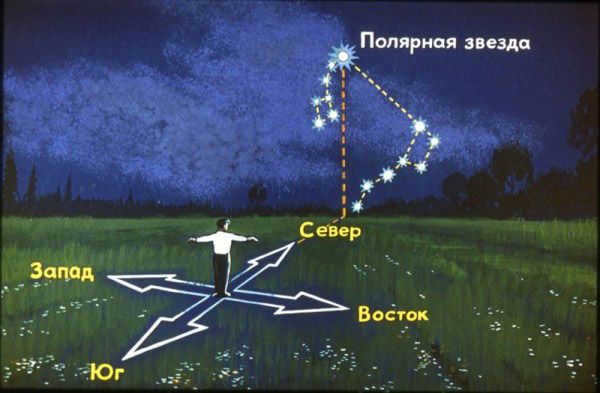
Curious facts about the constellation
Various cultures have developed their own beliefs and myths surrounding the constellation. In Indian culture, the Big Bucket was seen as the “Seven Rishis” – enlightened sages who could traverse all three realms of Indian mythology.
The Chinese viewed it as the chariot of the god Shandu, and the movement of the bucket’s handle during the night was used as a clock hand to determine the time. In Slavic and northern cultures, the constellation was associated with the Elk and was referred to as “Sohatiy”. Shamans from the Buryat, Sami, and Evenk tribes sought its aid.
In olden times in Russia, besides being seen as depictions of a bear and a ladle, the constellation was also interpreted as a representation of a grazing horse, which is why it was commonly known as the “Horse at rest”. Furthermore, the iron peg used to tether animals was believed to be the stationary Polaris in the celestial sphere.

